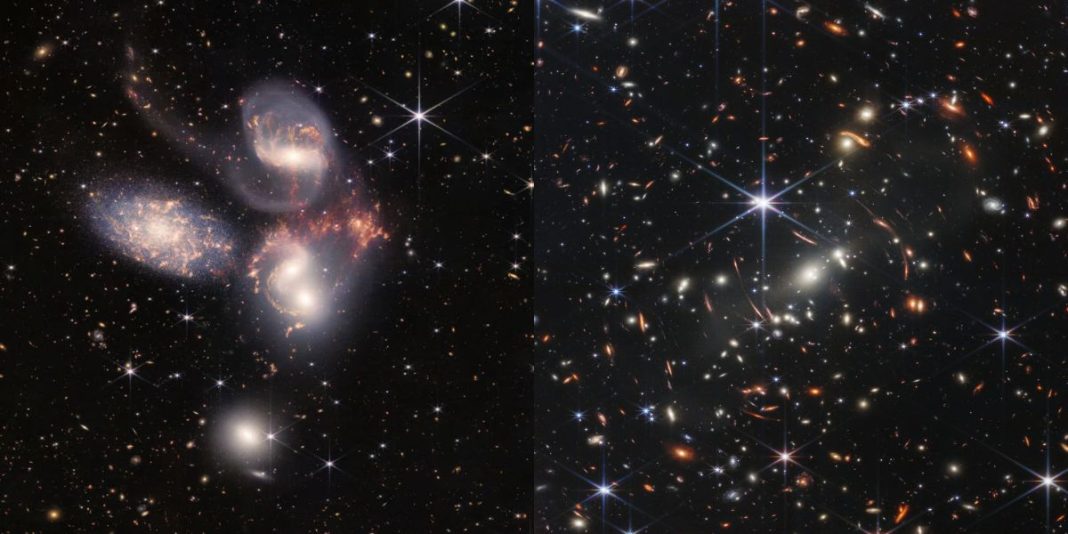The world’s most powerful telescope, NASA’s James Webb Space Telescope, has clicked some amazing pictures of the universe recently. The captured images have thrilled the people who love space and the solar system. The JWST started sending pictures back home for the first time in July 2022, from its spot 1.5 million km away from Earth. Since then, it has looked deeper into space than any other telescope. The James Webb Space Telescope is named after a NASA director and built on the legacy of the famous, Hubble Telescope. However, the James Webb Space Telescope has much more advanced features and is 100 times more powerful. The images taken by this telescope have shown everyone those parts of the universe that the Hubble Telescope couldn’t.
JWST Captured The Ring Nebula
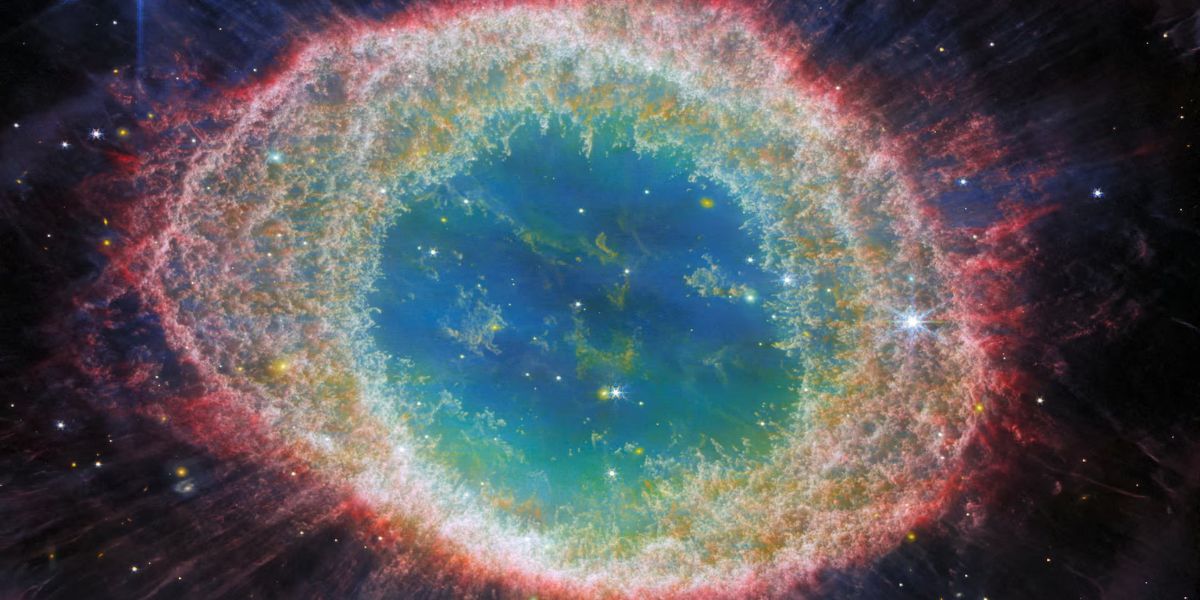
The powerful telescope captured a detailed image of the Ring Nebula in near-infrared light, showing the complex structure of it like never before. The composite image was released by NASA on 21st August 2023 and it shows the layers of dust and gas created by a dying star. After looking at this image, some scientists think that a companion star might be helping in creating these layers.
Cosmic Wreath Formed By The Stars
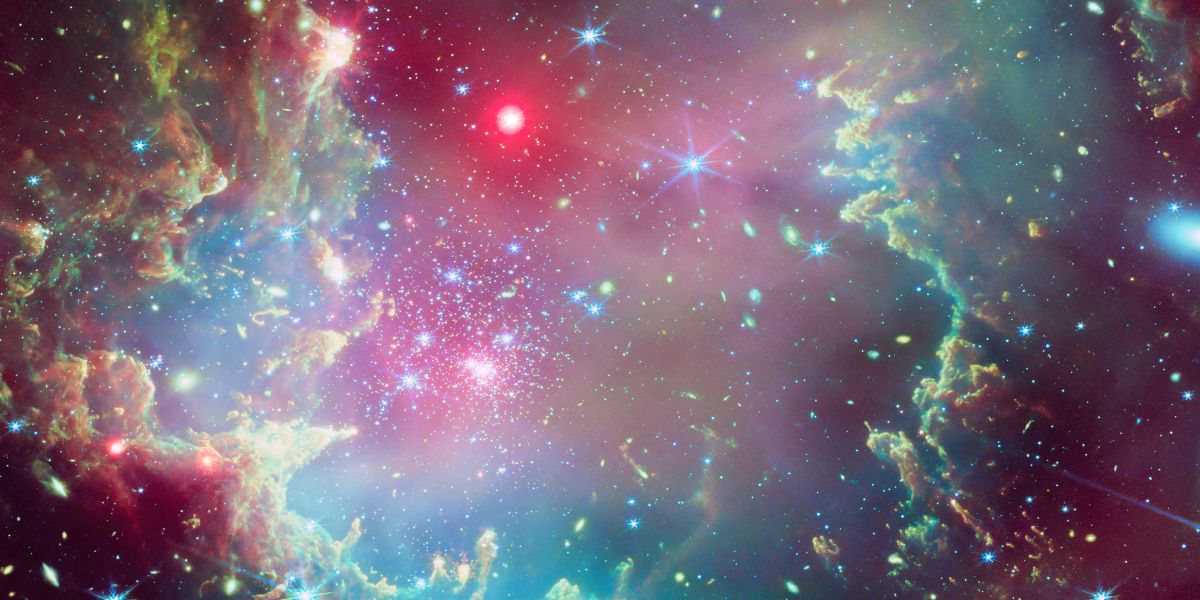
The next image captured by the James Webb Space Telescope is of the cosmic wreath, a glowing ring of gas and dust formed by the stars. The image symbolizes the stellar circle of life, death, and rebirth. In the picture, a star cluster NGC 602 is shown inside a large nebula of colored gas and dust particles. The gas and dust particles form dark ridges and peaks, glowing on the inside where they are lit up by stars. Over the darker parts, light clouds are spread over. Further, distant galaxies and some large and bright stars can also be seen. The star cluster is located on the edge of the Small Magellanic Cloud, a galaxy situated close to the Milky Way.
Spiral Galaxy NGC 1512
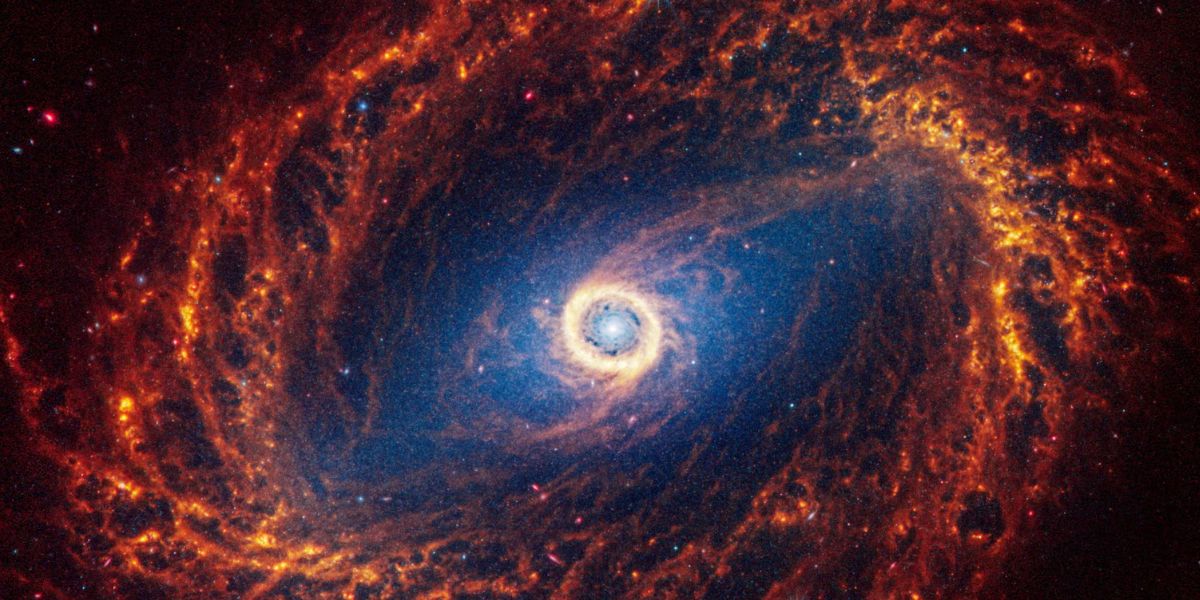
The James Webb Space Telescope has also captured the spiral galaxy NGC 1512. It is located 30 million light years away from the Earth. One such galaxy is the Milky Way and it resembles stunning pinwheels.
Local Galaxy NGC 2566
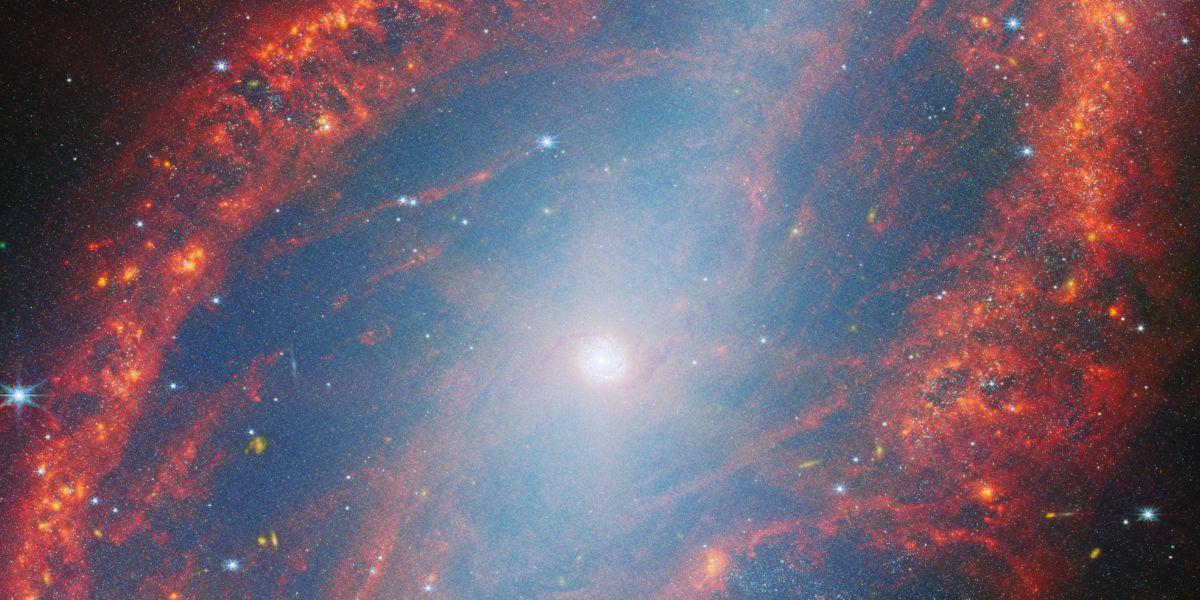
The image of local galaxy NGC 2566 was captured to understand the connection between stars, gas, and dust in the nearby star-forming galaxies. In the picture, an oval-shaped spiral galaxy can be seen whose core is a compact, pale spot that glows brightly filling the disc with bluish light. Thin strands of pale red dust are spread out from the center to the edges of the disc. Each of these strands connects to a thick arm of dust with brighter orange spots.
Cosmic Cliffs Of The Carina Nebula
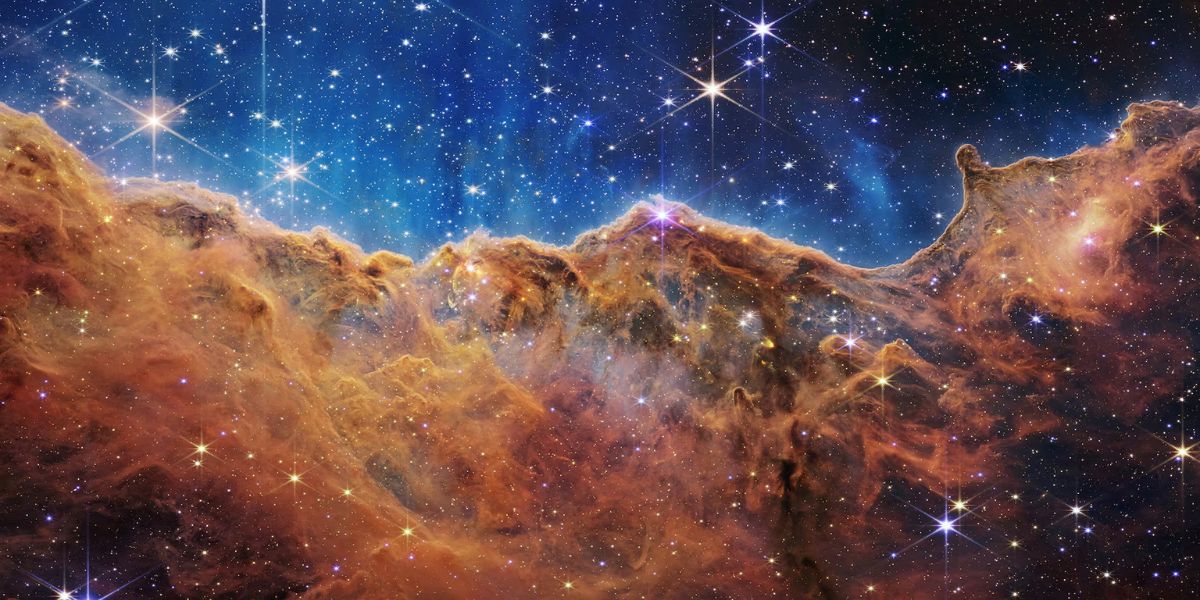
The famous Cosmic Cliffs of the Carina Nebula can be seen in the image captured by the James Webb Space Telescope. The picture is divided into 2 parts. The first one, which is the lower portion shows a cloudy, colorful nebula while the second one which is the upper portion is comparatively clearer. Both portions of the image are filled with countless stars of different sizes.
Planet-Forming Disks In The Early Universe Captured By JWST
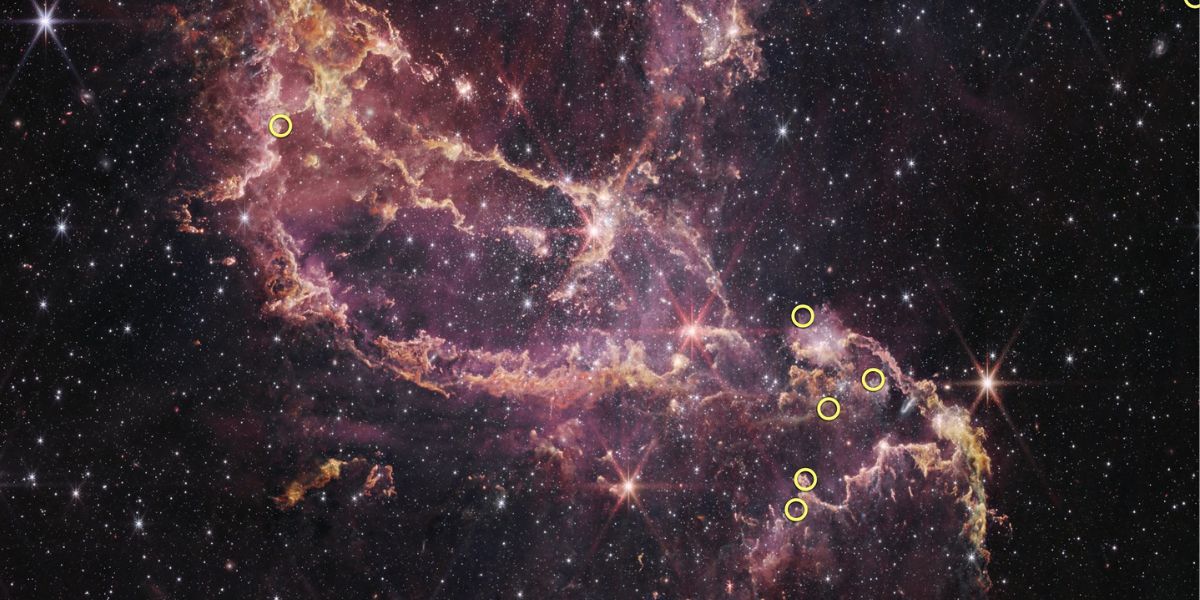
The above-mentioned image, captured by the James Webb Space Telescope, confirmed a controversial finding of the Hubble Telescope. It established that there are planet-forming disks in the early universe that last longer than expected, even though there are conditions that should make them disappear quickly. The JWST observed the star cluster NGC 346 and found out that the stars in this cluster have long-lasting disks, allowing the planets to form without any heavy elements. These disks last longer than those around young stars in the Milky Way.
Asteroid Belt Outside The Solar System
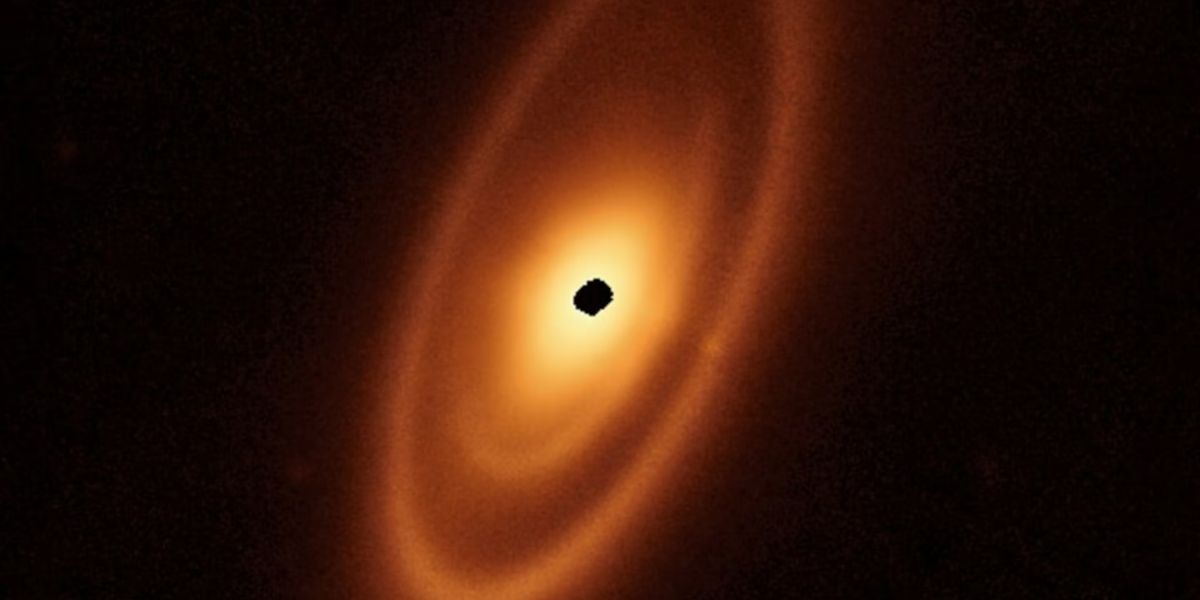
The JWST gave a detailed view of an asteroid belt outside the solar system by capturing this image. Webb revealed that it is around the star Fomalhaut which has three belts of asteroids. It includes 2 inner belts which were never seen before. From the star, these three belts extend up to 14 billion miles which is 150 times the distance of Earth from the sun.
Side-by-Side Comparison of NGC 346
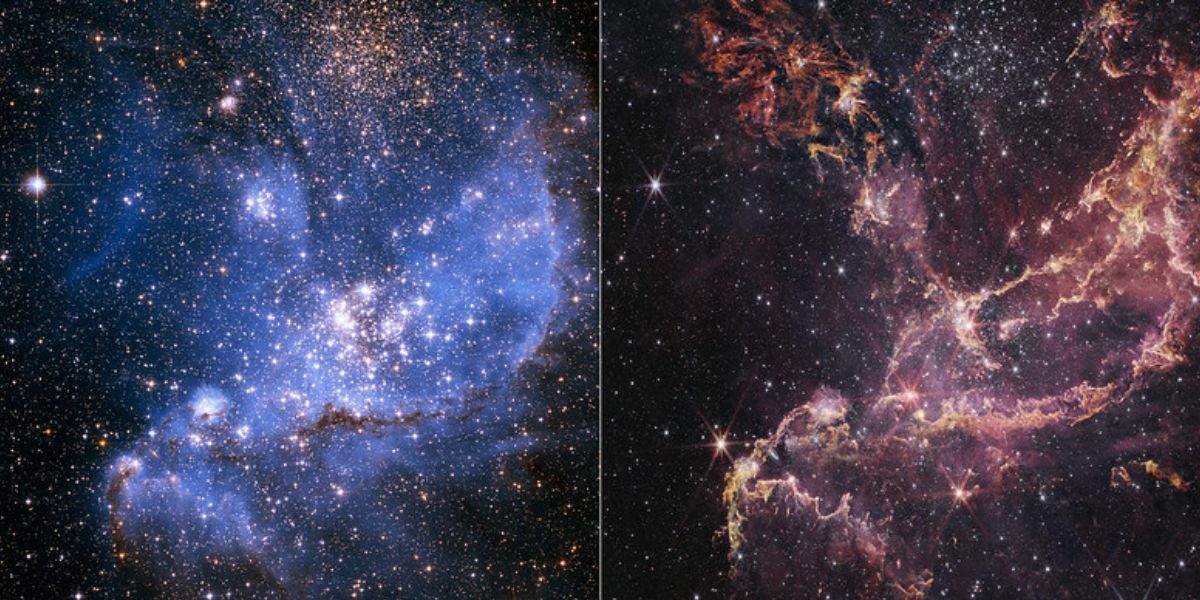
The James Webb Space Telescope has captured an image of star cluster NGC 346 and compared it to the Hubble Telescope’s image. Though Hubble’s image shows more nebulosity, the picture of JWST goes deeper through the clouds and reveals the cluster’s structure. This star cluster has very few elements that are heavier than helium and hydrogen. Hubble’s image shows the star cluster in shades of blue along with white stars. Whereas Webb’s image has shades of pink and orange with a few stars as compared to Hubble’s image.
Globular Cluster Called NGC 2210
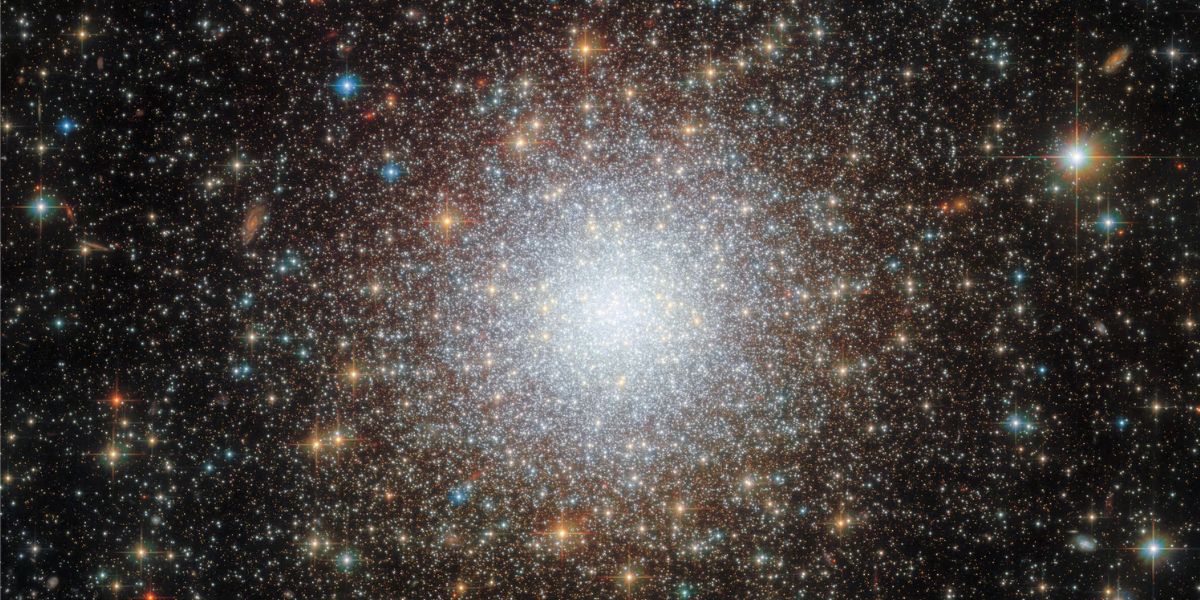
On 8th December 2023, NASA revealed the composite image taken by the James Webb Space Telescope of the globular cluster, NGC 2210. It is situated in the Large Magellanic Cloud which lies about 157000 light years from the Earth. Moreover, it is a satellite galaxy of the Milky Way. This means that the 2 galaxies are gravitationally bound to each other.
Spiderweb Protocluster
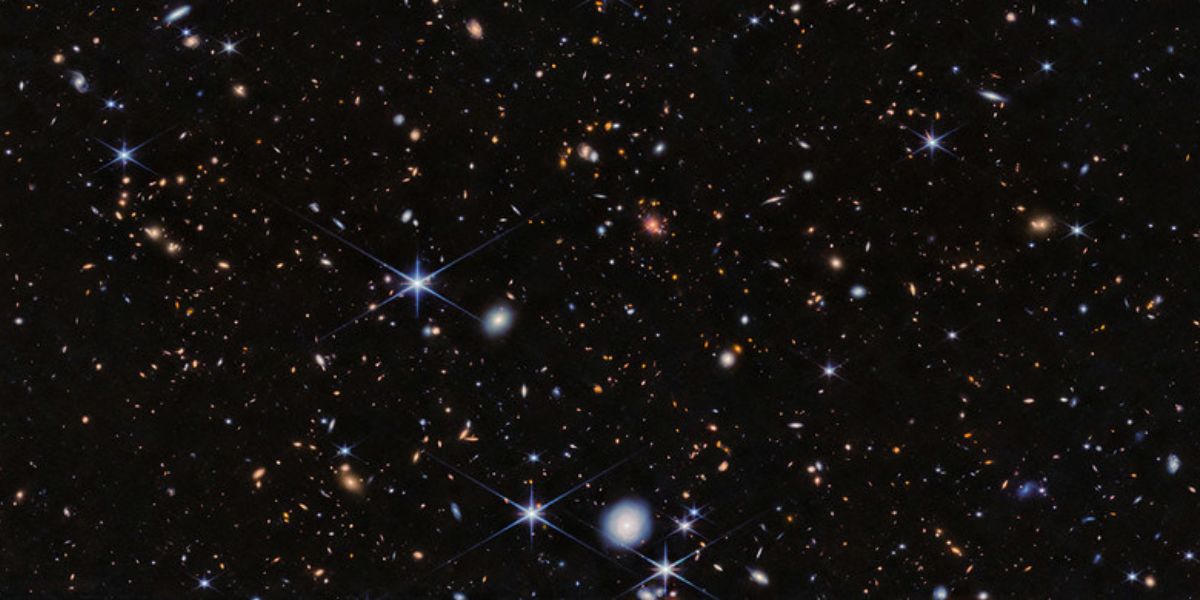
Another image captured by the James Webb Space Telescope is of the Spiderweb Protocluster field. In the picture, hundreds of galaxies appear along with many overlapping objects at various distances. The image shows bright blue stars in the front some of which have 8 spikes around them. Also, white and pink galaxies shaped like spirals and ellipses can also be seen along with tiny orange dots which are distant galaxies or stars.
Close-Up Image of Rho Ophiuchi

Rho Ophiuchi is captured in a close-up image by the James Webb Space Telescope. It is the closest star-forming region to the Earth. In the picture, dark and thick dust clouds can be seen surrounding the protesters. Also, in the middle of the image, a newborn star can be seen shooting out 2 huge jets of molecular hydrogen gas.
Spiral Galaxy NGC 2090
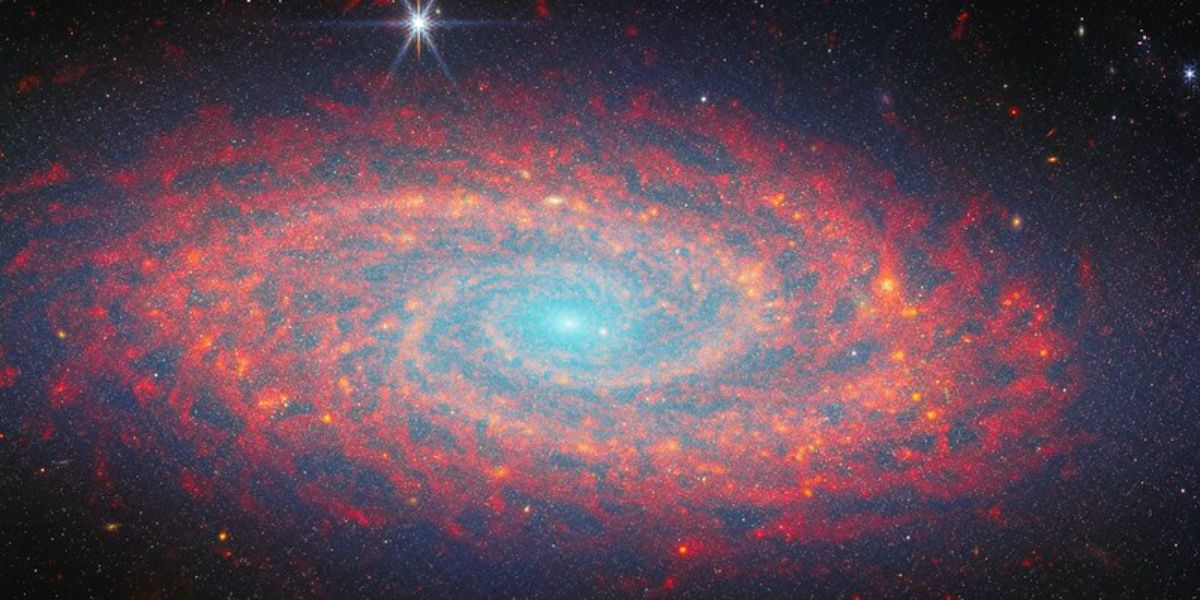
JWST’s image of the spiral galaxy NGC 2090 shows its 2 winding arms along with intricate details of its dust and gas. In visible light, the arms of the galaxy are not clearly seen because they are hidden by dust and gas. The galaxy has a patchy and dusty disk and is called the flocculent spiral.
Orion Bar, A Part Of Orion Nebula
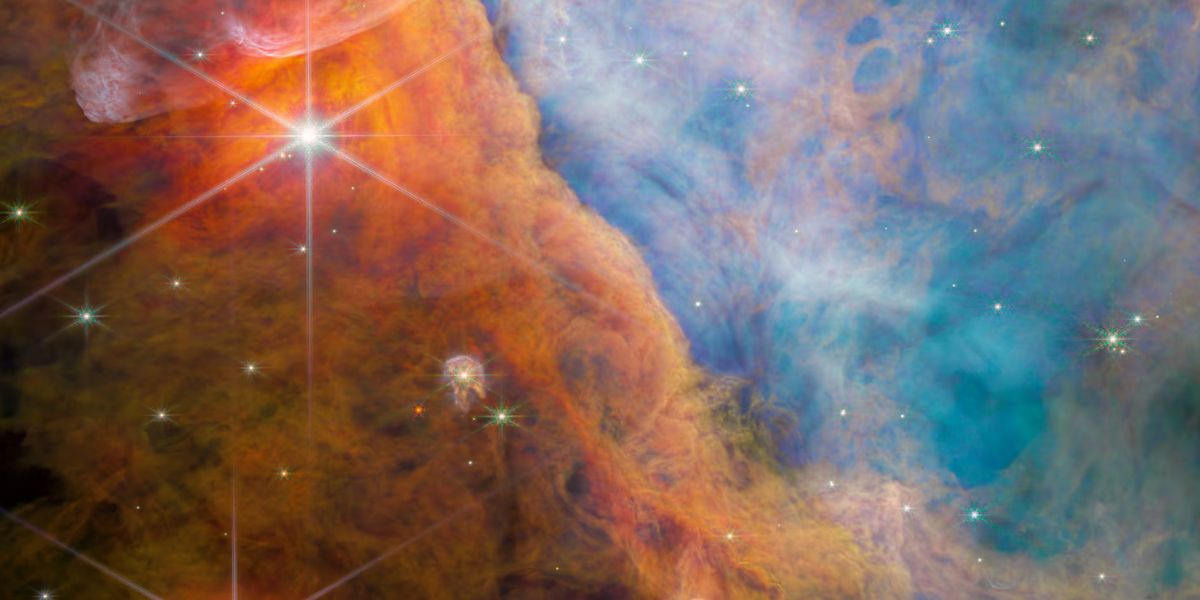
On 26th June 2023, NASA revealed the composite image of a part of the Orion Nebula called the Orion Bar. The image was taken by the James Webb Space Telescope.
Sombrero Galaxy Shown In Mid-Infrared Image
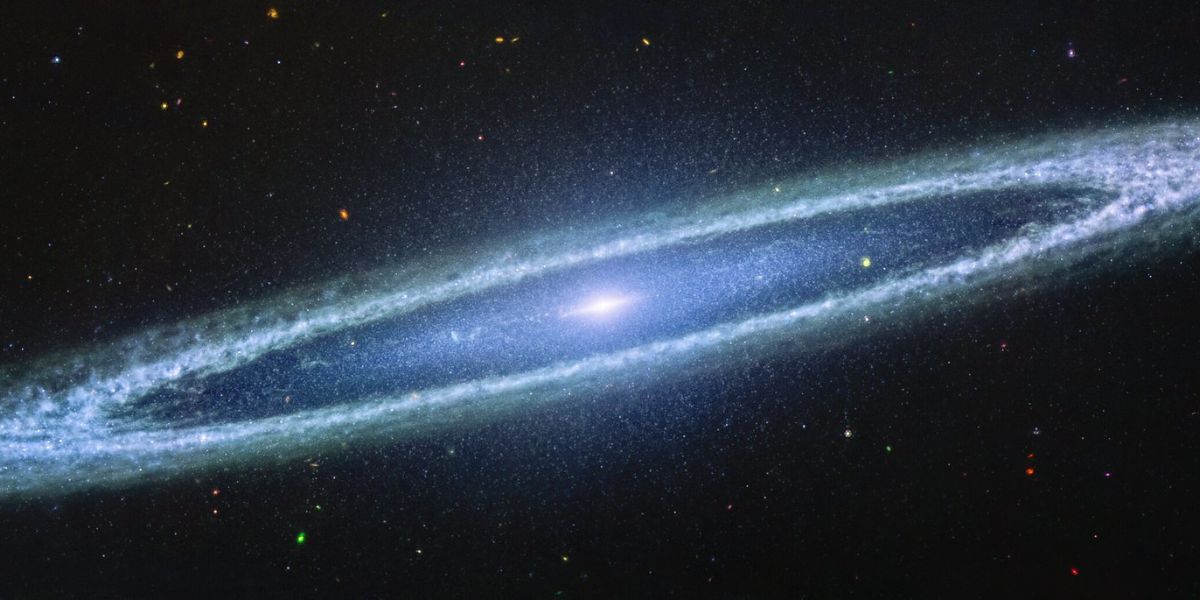
M104, also known as the Sombrero galaxy is captured by the JWST in a mid-infrared image. The bright core of the galaxy is dim and reveals the smooth inner disk. Also, it tells how the clumpy gas in the outer ring is distributed. This galaxy is not known for the formation of new stars, but it does have many stars such as globular clusters, which can be studied by scientists.
Planetary Nebula Captured Using The NIRCam Instrument

The James Webb Space Telescope has also captured a planetary nebula using the NIRCam instrument. This instrument helps in capturing images in infrared light so that things can be seen more clearly.
Cold Dust Between Two Galaxies, NGC 2207 And IC 2163
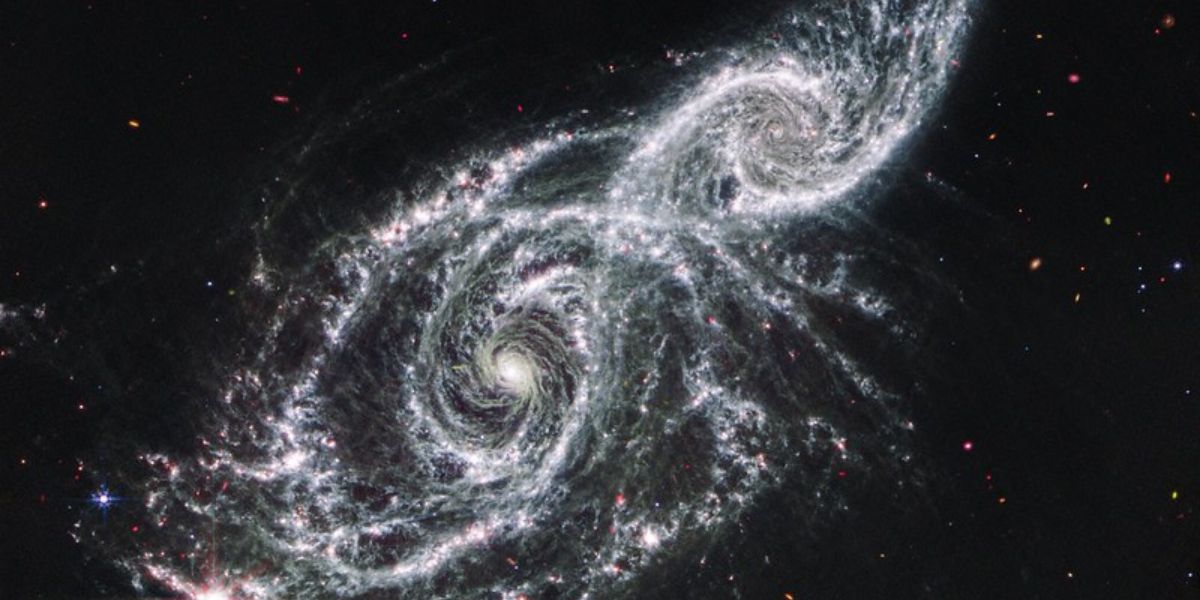
The above-mentioned image shows the cold dust in 2 galaxies, IC 2163 and NGC 2207. The dust is shown in bright white color. The bright pink color in the image shows the stars and star clusters which are hidden in the dust. Some of the pink dots in the image might be quasars, also called distant supermassive black holes.
Wolf Rayet Star, Also Called WR 124
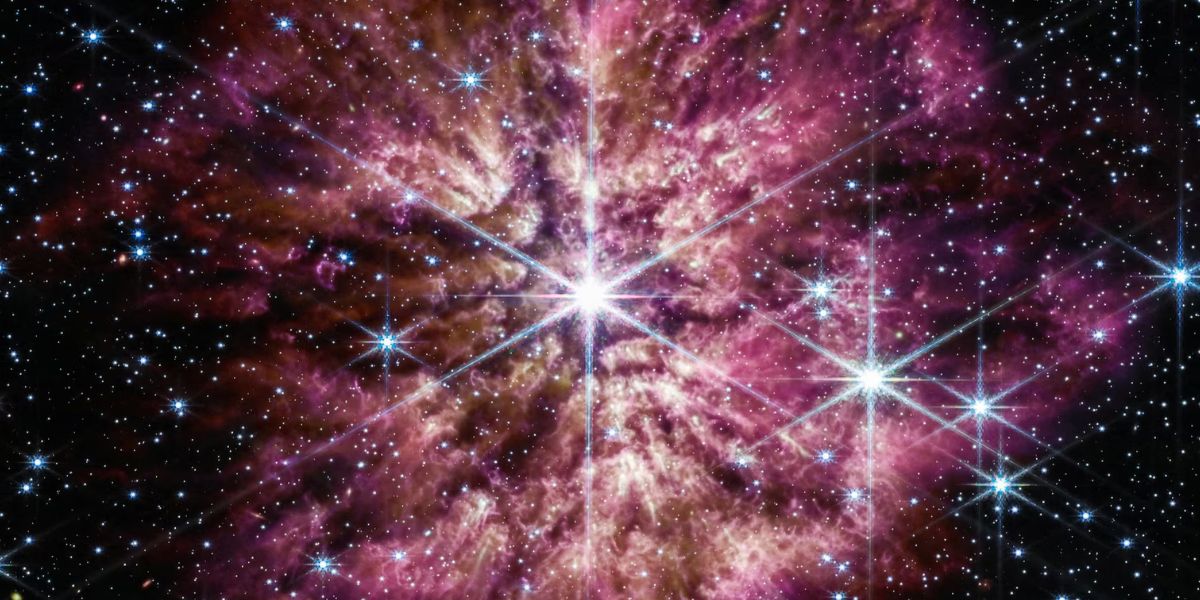
The James Webb Space Telescope captured the image of the Wolf Rayet Star, also called WR 124. It is located 15000 light-years away in the Sagittarius constellation and is 30 times bigger than the Sun. The released gas from the star moves away from the star slowly and cools down leading to the creation of cosmic dust which glows in the infrared light. This glowing dust is detected by JWST.
Complex Organic Molecules
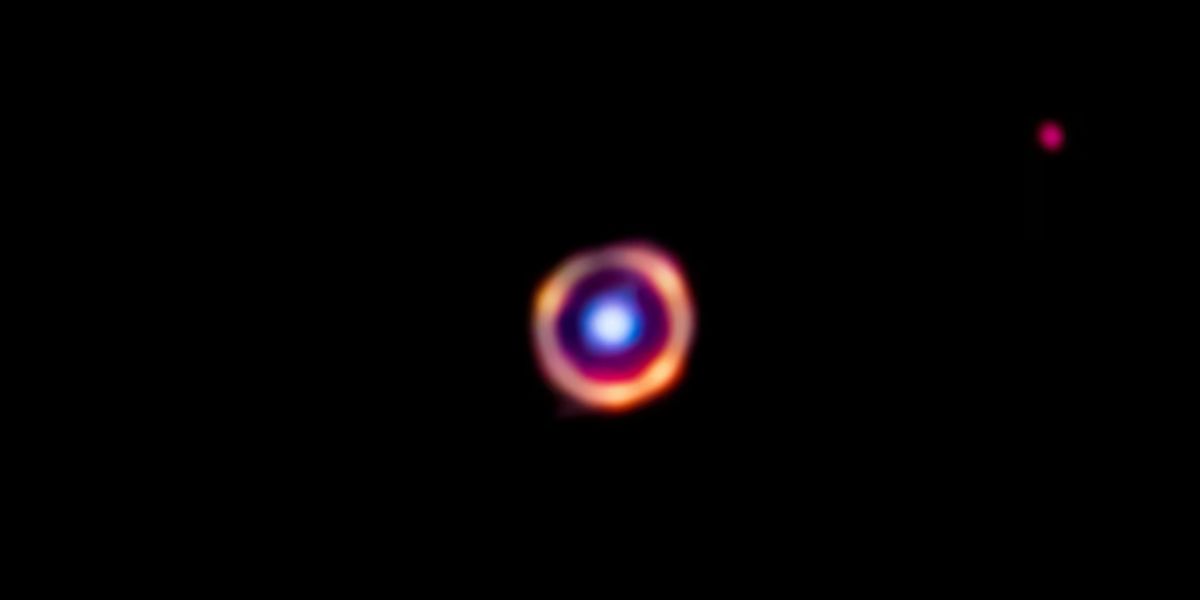
A picture of complex organic molecules, similar to smog or smoke, was captured by the James Webb Space Telescope, in a galaxy that is 12 billion light years away. This is the first time that these molecules have been detected this far.
Updated Look Of Phantom Galaxy
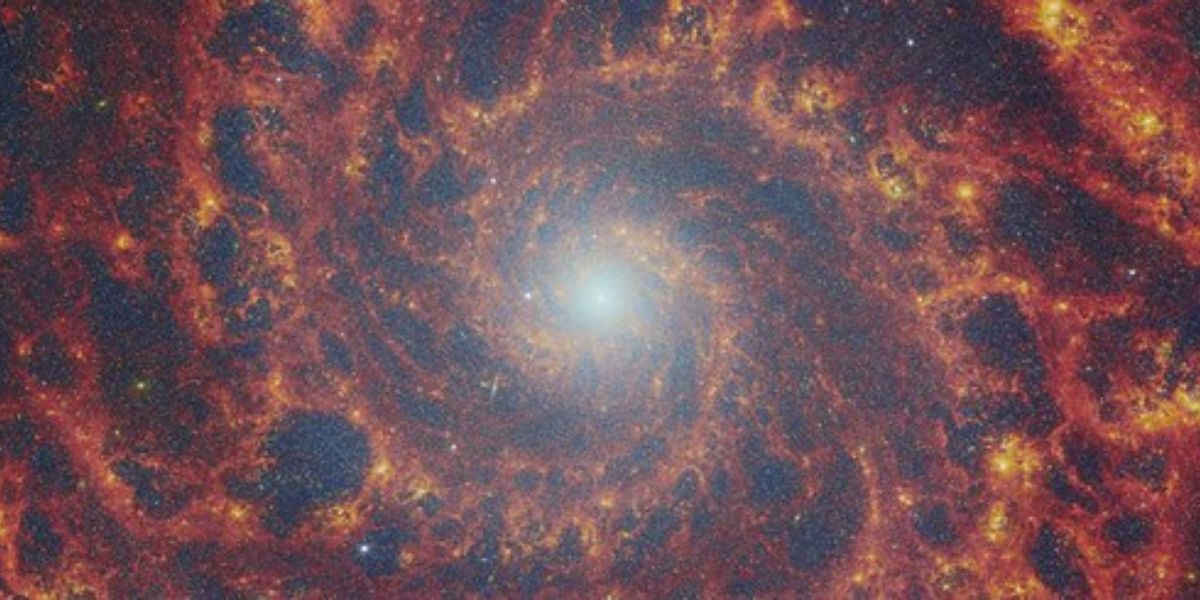
The next image is of the Phantom Galaxy, also known as M74. James Webb Space Telescope has captured an updated look at this galaxy which shows the bright white core. In addition, at the core’s center, there is a small white and blue light that is coming out from stars and dust. The ring of the galaxy is surrounded by deep orange and red colors which highlights the filaments of dust around large black bubbles.
Crab Nebula
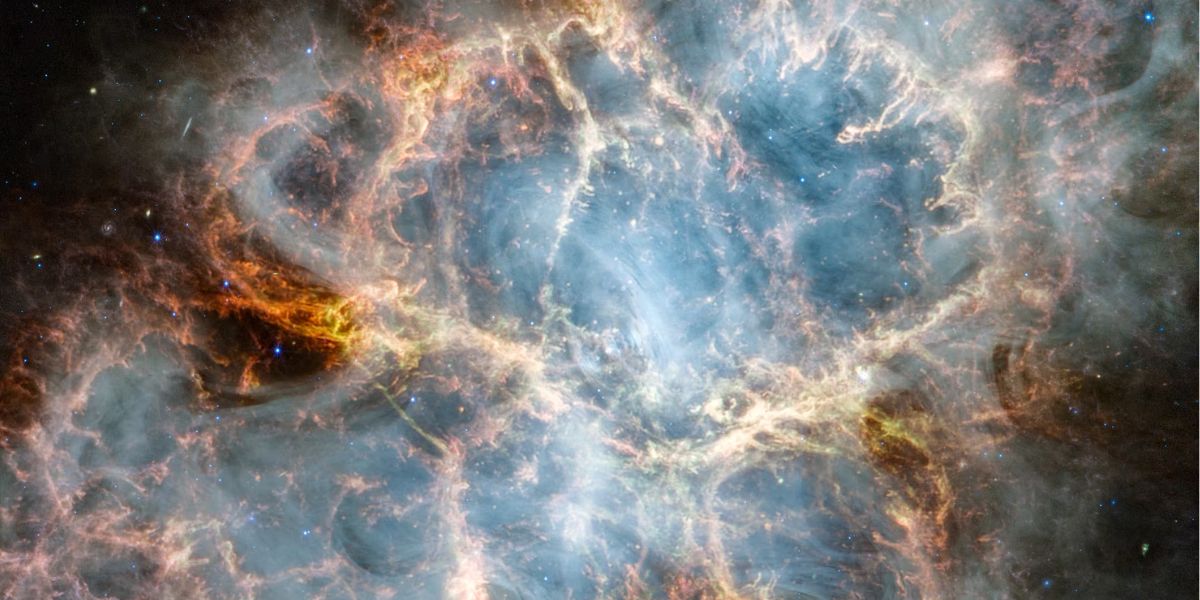
The James Webb Space Telescope captured the image of the Crab Nebula. It is the leftover remains of a star that exploded 6500 light years away.
Network Of Gas And Dust Shown In Spiral Galaxy NGC 7496
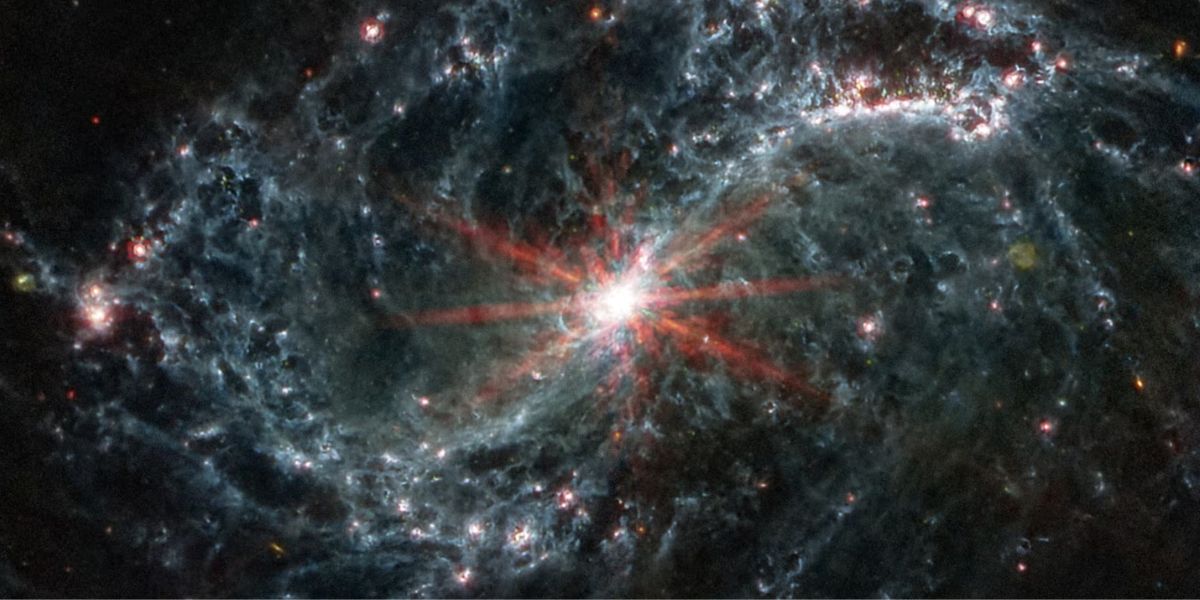
The composite photo of Spiral Galaxy NGC 7496 was captured by the James Webb Space Telescope. This web-like galaxy shows a complex network of gas and dust. In the image, it can be seen that 8 red diffraction spikes are extending out of its bright core. Background galaxies are also there which are depicted by the colorful dots.
Group Of 5 Galaxies
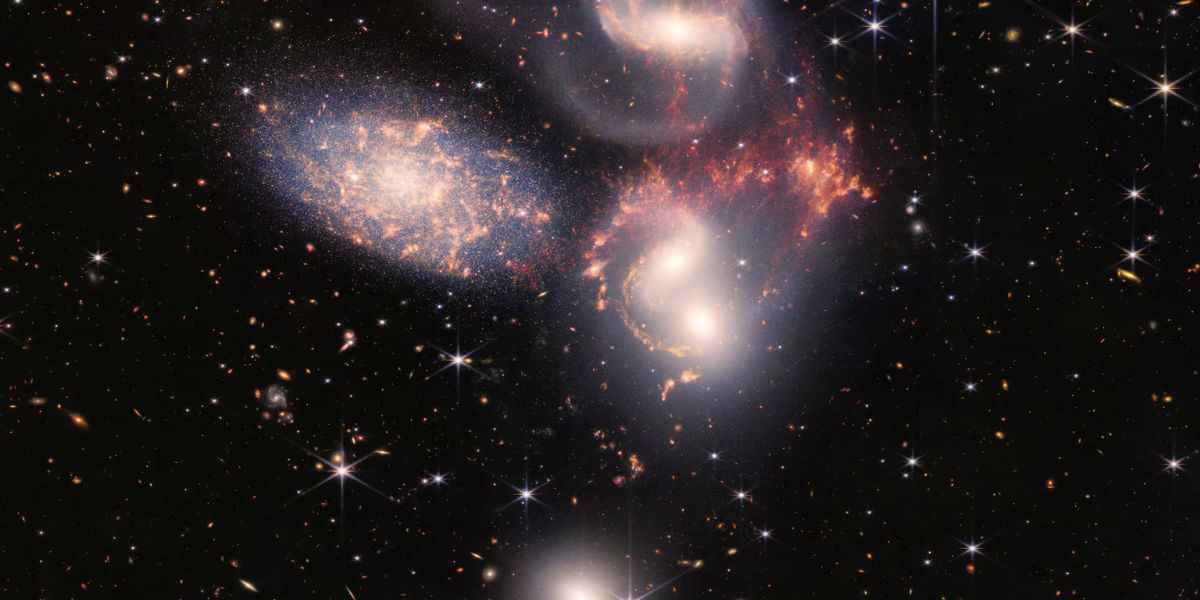
The James Webb Space Telescope captured a group of five galaxies in a stunning picture. Two are in the middle, one on the top, one on the upper left, and one on the bottom.
Meisser 74 Captured By The James Webb Space Telescope
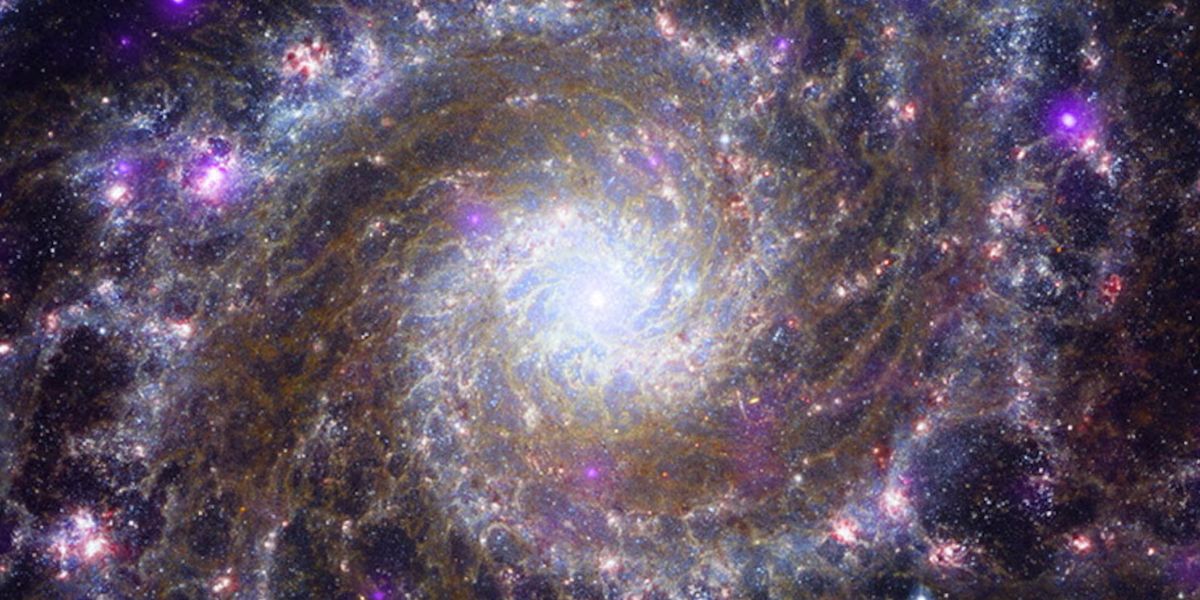
The spiral galaxy, Meisser 74 has been captured by the James Webb Space Telescope. If we look at it from the Earth, the galaxy looks like it is facing us with its bright white core and sparkling spiral arms. Also, between the silver-blue arms, there are some tangled webs of dark dust known as the dust lanes.
A Newborn Star
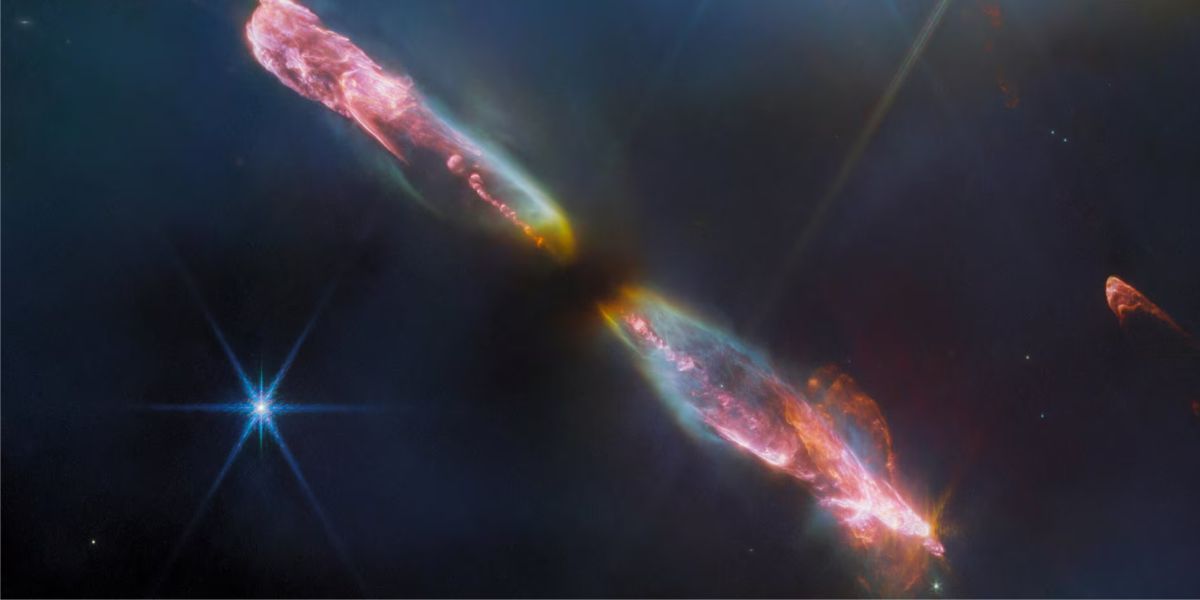
The JWST has captured the picture of a newborn star which is just a few tens of thousands of years old. From its poles, the star is sending out powerful gases, moving faster than the speed of sound which leads to the creation of Herbig-Haro (HH) 211. This object is situated 1000 light years away from the Earth.
Spiral Galaxy NGC 628
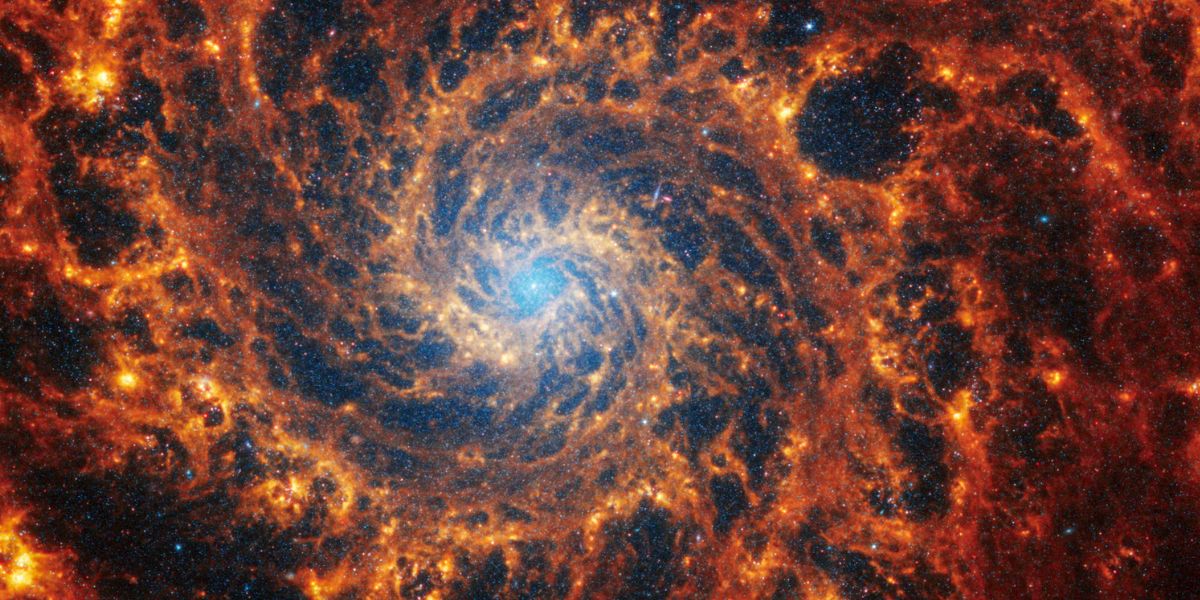
NGC 628, a spiral galaxy has been captured in a picture by the James Webb Space Telescope. It is located 32 million light years away from the Earth. In the image, the galaxy can be seen having a lot of stars along with its center which is a light blue haze.
Eagle Nebula
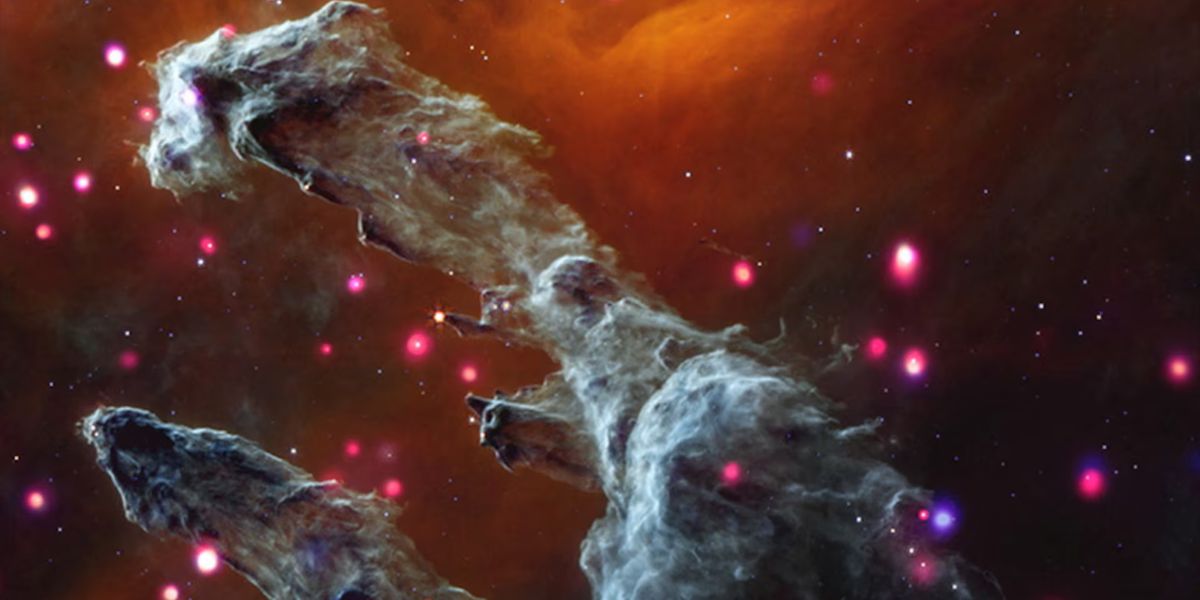
The image of Eagle Nebula, also called M16 was captured by the James Webb Space Telescope. It shows columns of gray gas and dust which are called Pillars of Creation. Also, these columns are backed by a dark orange mist and are surrounded by glowing pink and purple dots. These dots are known as stars which emit large amounts of x-rays.
Brown Dwarfs Found In NGC 602

NGC 602 is a young star cluster which is located in the Small Magellanic Cloud. In this, the James Webb Space Telescope has found some possible brown dwarfs which can be seen in the image. These objects are not stars and also not full planets. Usually, they are between 13 and 75 times the mass of Jupiter. Also, they can move freely in space and do not orbit a star. Though brown dwarfs share some features with exoplanets but are different from planets.
Westerlund 1
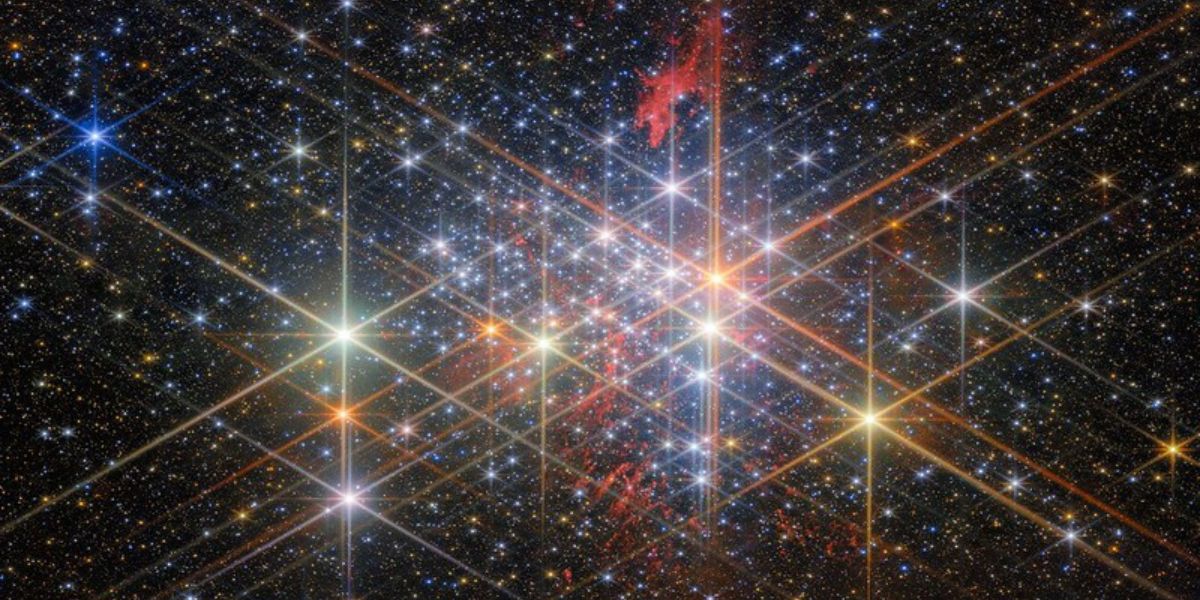
The James Webb Space Telescope has captured Westerlund 1, one of the closest super star clusters. These clusters are very young and have more than 10000 times mass as compared to the sun in a small space. In our galaxy, Westerlund 1 is the largest cluster which is located within a region less than 6 light-years across. It is said that though it is now an open cluster, but someday it will evolve into a globular cluster.
A Pair of Galaxies Called ARP 107 Captured By The JWST
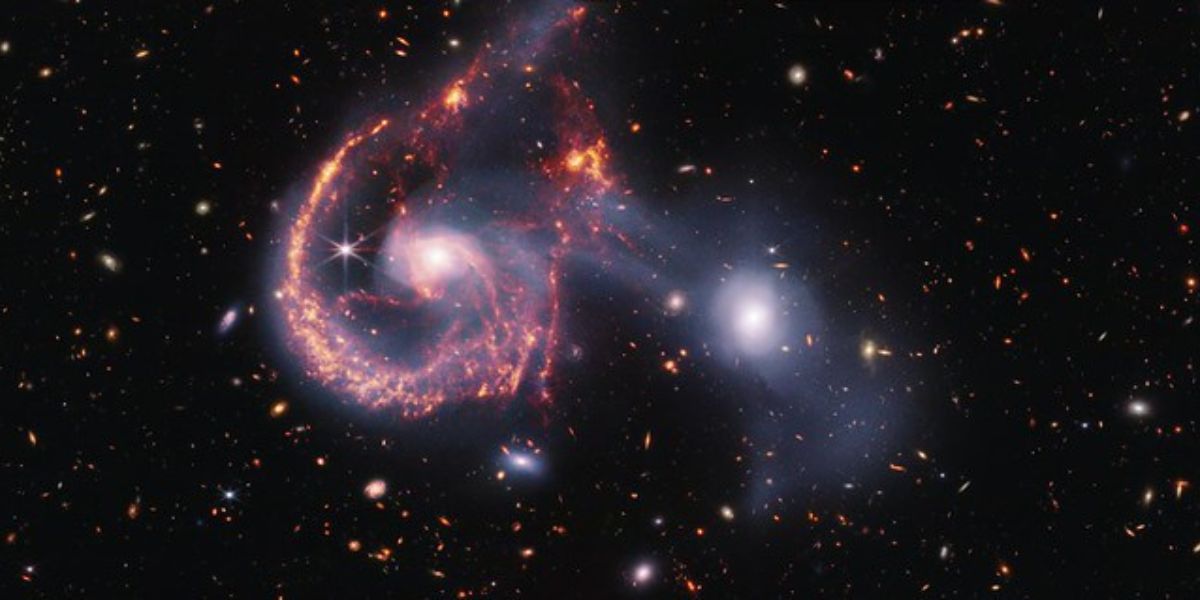
The powerful telescope has captured ARP 107, also called a pair of galaxies in a composite image in both, near and mid-infrared light. In mid-infrared, the pinkish color highlights the areas where new stars are forming and dust in the galaxy. On the other hand, the near-infrared image shows the stars within the colliding galaxies along with a translucent bridge of stars being pulled from both of them.
Close-up Look Of The Digel Clouds
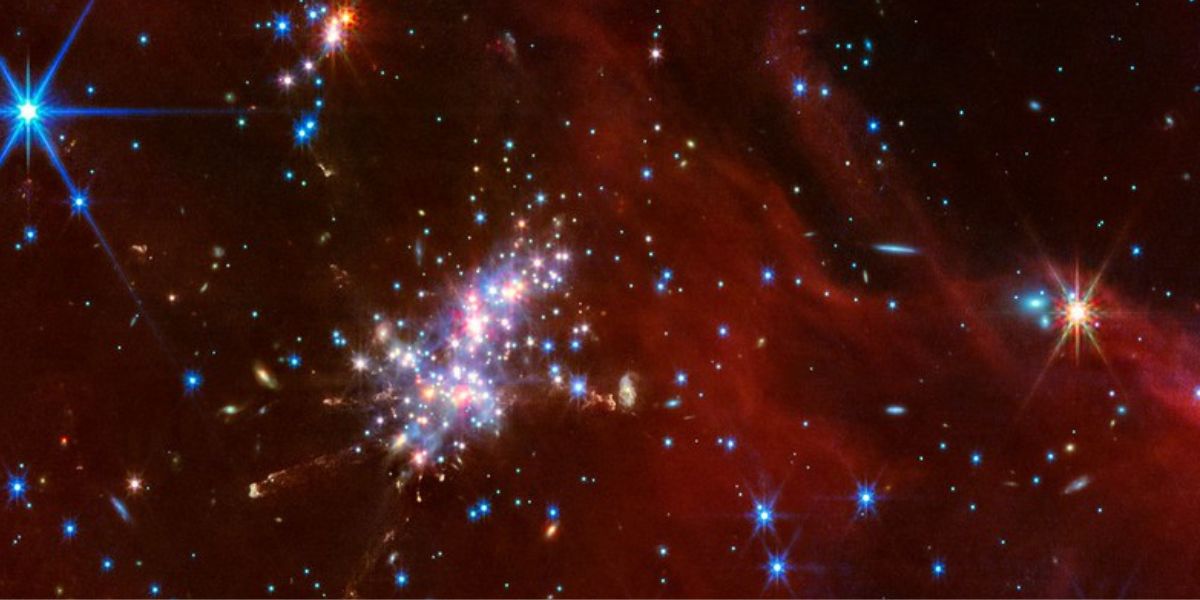
The James Webb Space Telescope has captured a close-up look at the Digel Clouds. It is a region in the outer part of the Milky Way where stars keep forming. The telescope has captured intricate details of the activity happening in the star clusters within these clouds.
Cosmic Question Mark Captured In The MACS-J0417.5-1154
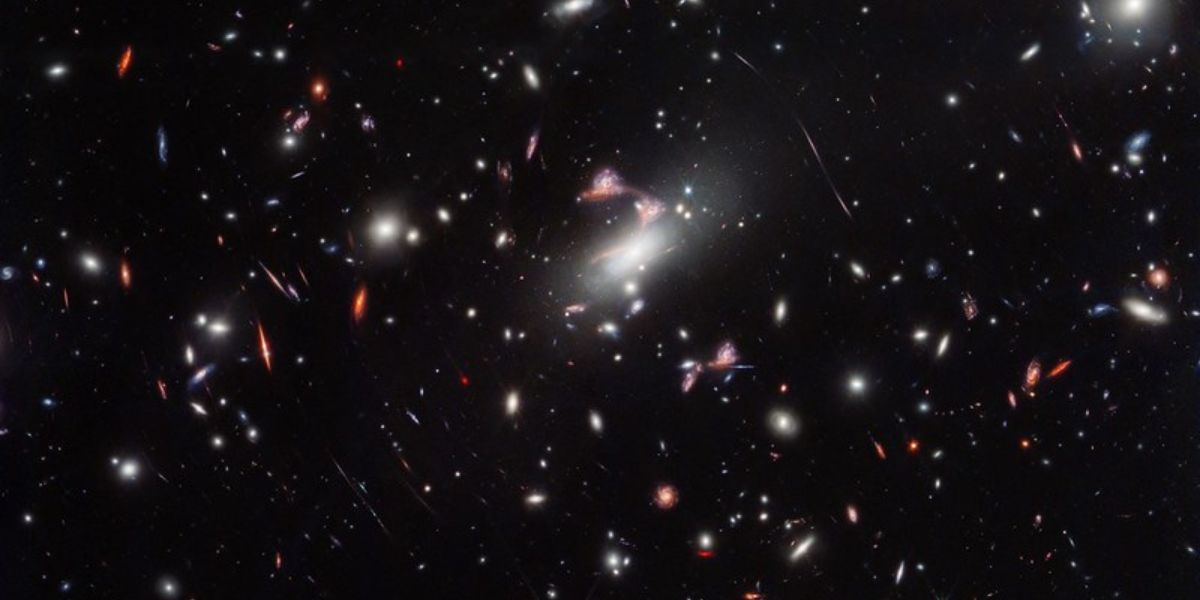
The James Webb Space Telescope captured the cosmic question mark in the galaxy cluster MACS-J0417.5-1154. This happens because the galaxy cluster is so heavy that its gravity bends and stretches space itself. Now, this leads to the creation of the funhouse mirror effect, distorting the light from the galaxies and making them look big in size.
Amazing Picture Of Perseus, NGC 1333
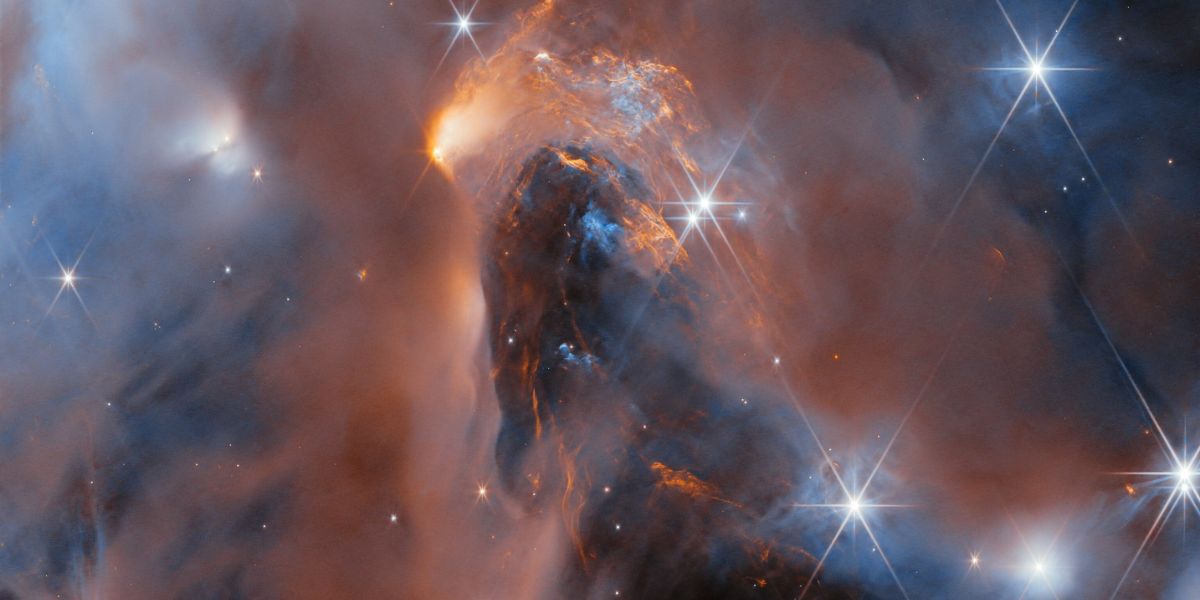
The James Webb Space Telescope captured a stunning picture of Perseus, also called NGC 1333. It is a nearby star-forming region. The infrared vision of the telescope reveals the brown dwarfs, newborn stars, and planetary mass objects by peeking into the dusty veil. Also, the young stars are surrounded by dust and gas which might produce planetary systems.
Meisser 106
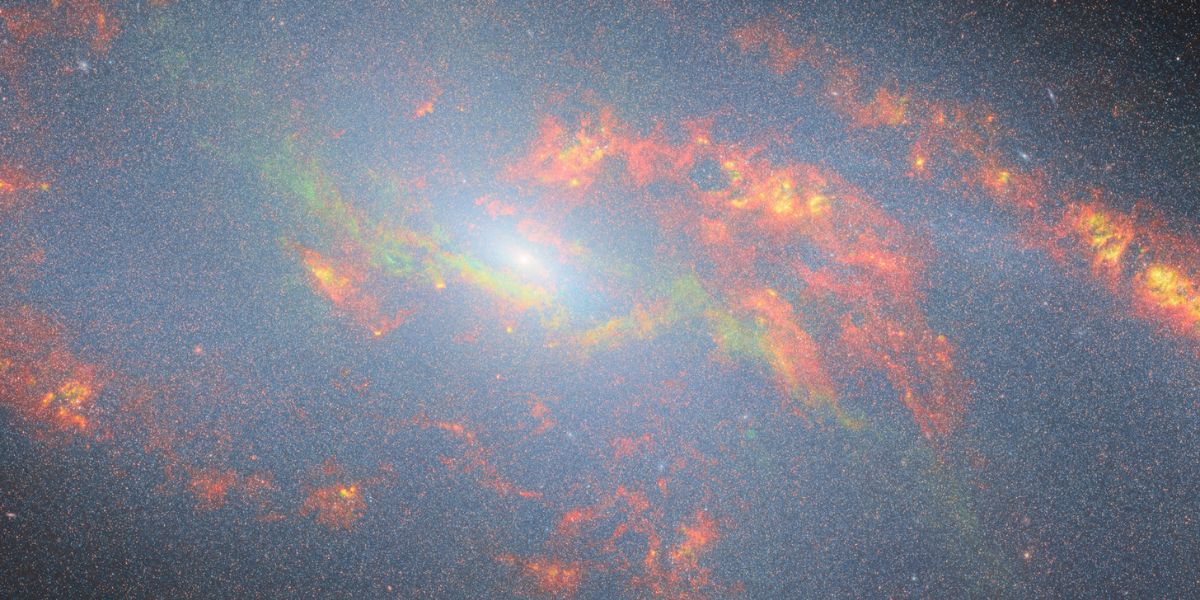
Meisser 106 is a spiral galaxy that has been captured by the James Webb Space Telescope. This galaxy’s center shines brightly because a black hole is eating the dust and gas, making them heat up and glow. Also, Meisser 106 has 2 extra arms made up of hot gas, shown in green color in the image. These extra arms might be created due to the violent churning of the gas near the black hole.
Two Interacting Galaxies
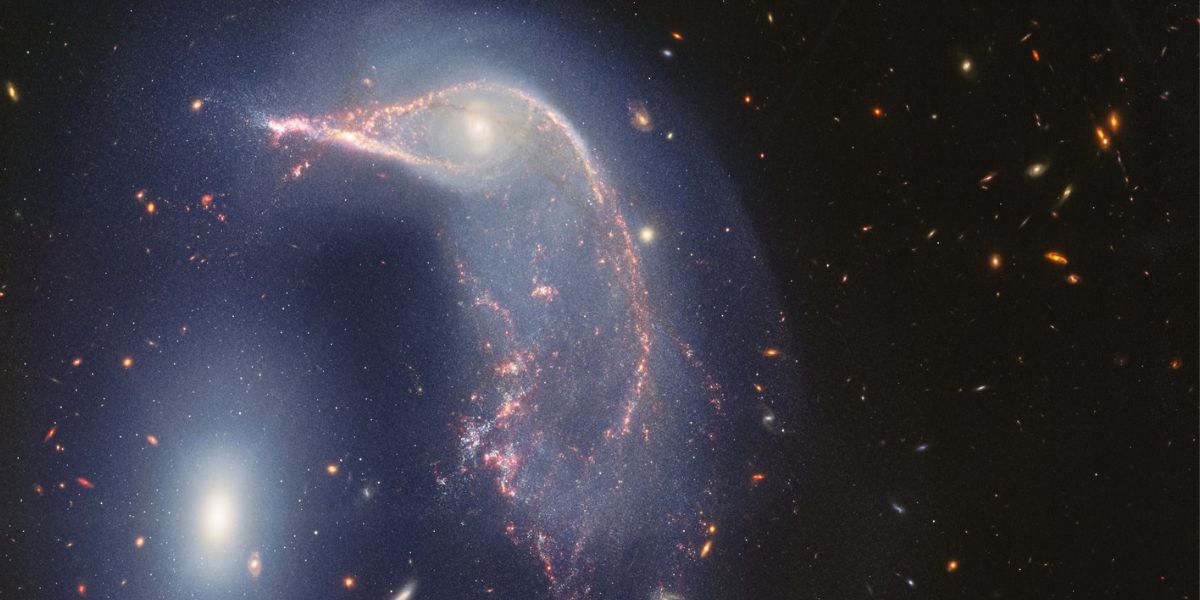
The JWST’s recent image shows two galaxies, NGC 2936 (Penguin) and NGC 2937 (Egg) interacting with each other. The two galaxies are in a cosmic hug connected to each other by a blue haze of stars and gas. Moreover, the two galaxies are merging for tens of millions of years and will ultimately become one. The Penguin and the Egg galaxies are about 100,000 light-years apart.
Mid-Infrared View Of ARP 142 Galaxies
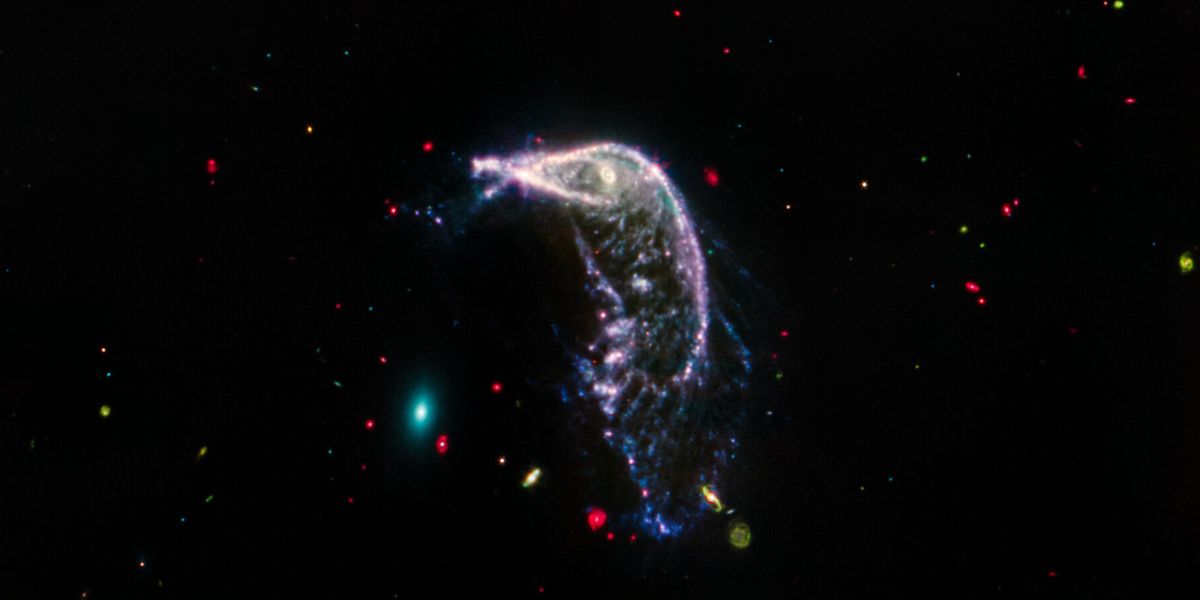
The image taken by the James Webb Space Telescope of ARP 142 galaxies looks like a mix of bright colors with the dark background of space dotted with colorful stars. This image has been captured by MIRI, a mid-infrared instrument of the telescope that astronomers use to study cooler objects, faraway galaxies, and dust. In the image, the Egg Galaxy is a small teal oval with gauzy layers. This galaxy shows old stars because it has lost or used up gas and dust. The Penguin Galaxy has a similar shape but with stretched dust and gas. The blue smoke-like material in the image is carbon-containing molecules known as polycyclic aromatic hydrocarbons.
Composite Image Of Orion Nebula
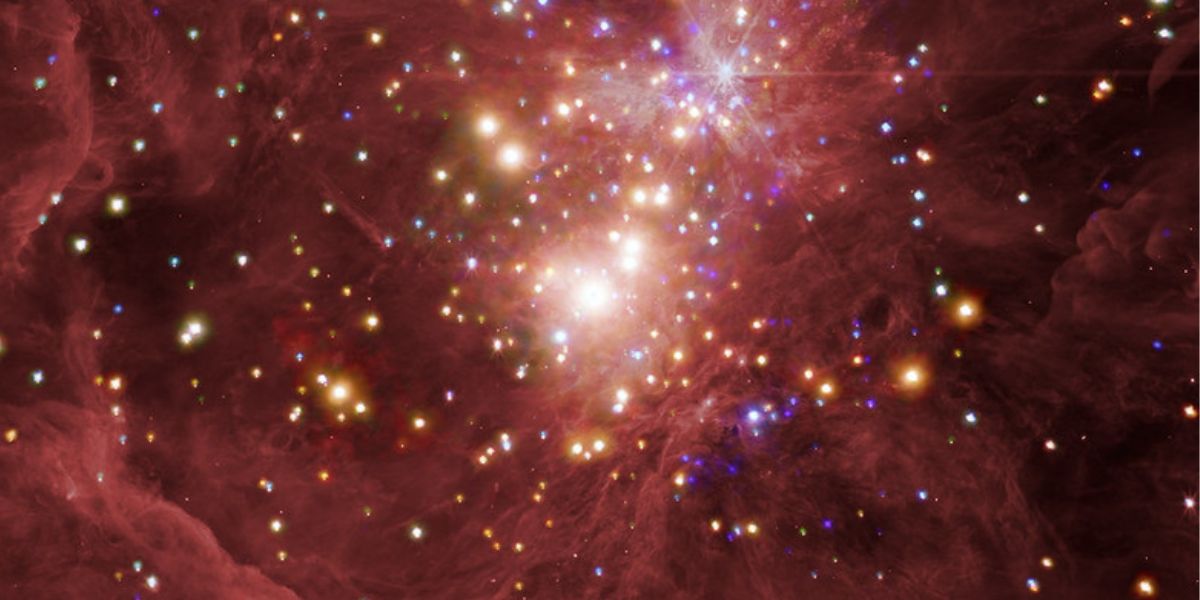
This image of the Orion Nebula is a composite image which is taken by the James Webb Space Telescope and Chandra X-ray Observatory. It is a giant cloud where stars keep forming. Also, this region is a little bit farther from Earth at about 1500 light-years away and is still located in the Milky Way galaxy. The Webb telescope shows the gas and dust in a dark red color whereas Chandra shows young stars in red, green, and blue color.
Gravitationally Lensed Quasar
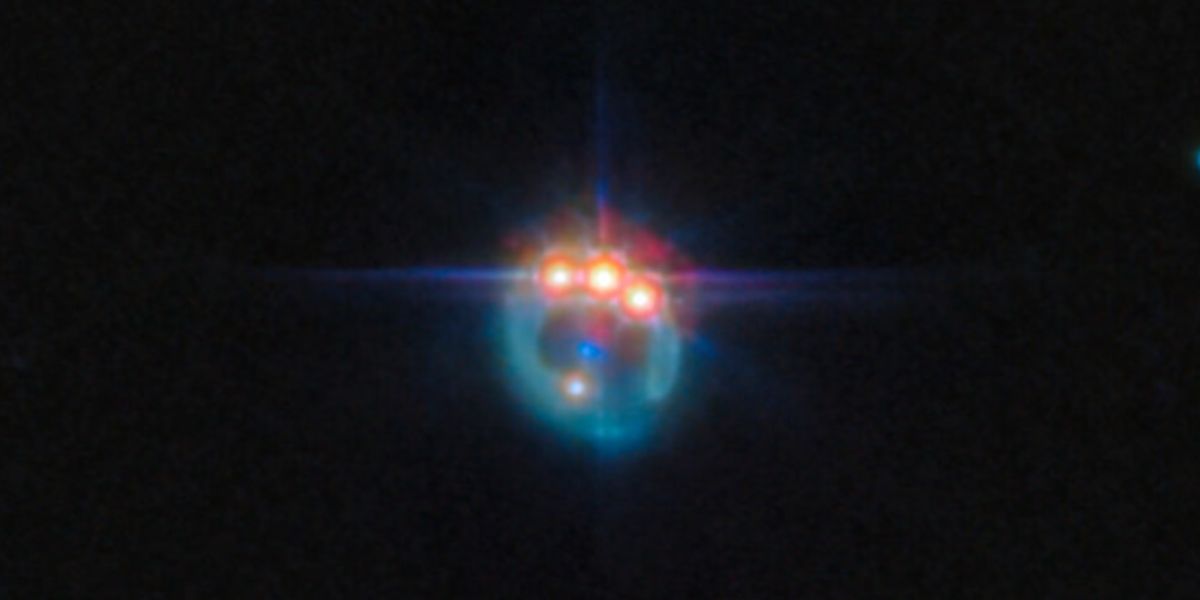
The James Webb Space Telescope has captured the image of an extremely bright galactic core called quasar. In the image, they appear as glittering gems or glowing orange dots. Generally, the quasar appears like an arc with 4 bright spots because of an intriguing effect called gravitational lensing.
Spectacular Image Of Protostar
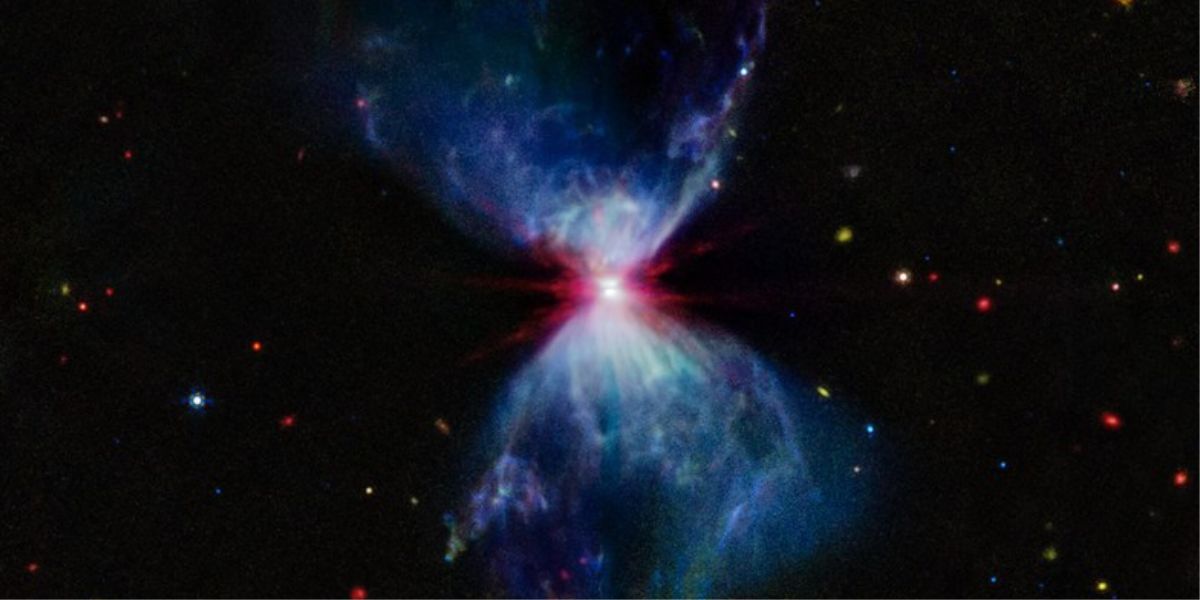
This image is of a new red, blue, and white star-to-be called a protostar. This young object is hidden in the neck of the hourglass-shaped cloud of dust and gas and is relatively 100,000 years old. The above-mentioned picture is taken by the telescope’s mid-infrared instrument. The blue color in the image shows carbon-rich molecules, red is the protostar, and the planet-forming disk. The white color represents the mix of thick dust, hydrocarbons, and ionized neon. Now, as the protostar grows in age, it pushes, breaks apart, and consumes the clouds.
WL 20S
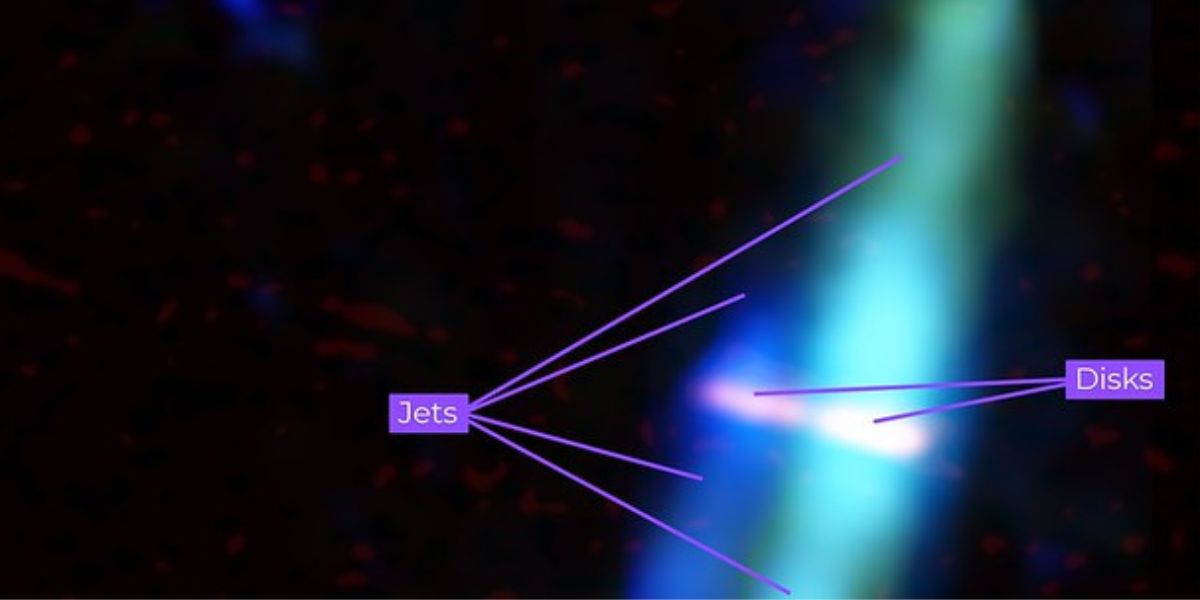
The James Webb Space Telescope’s image has revealed that WL 20S, long thought to be a star, is actually a pair of stars. The blue and green color shows gas jets emanating from the poles of twin stars. However, the pink color represents the disks of dust and gas surrounding the stars.
Carbon Molecules Around A Young Star
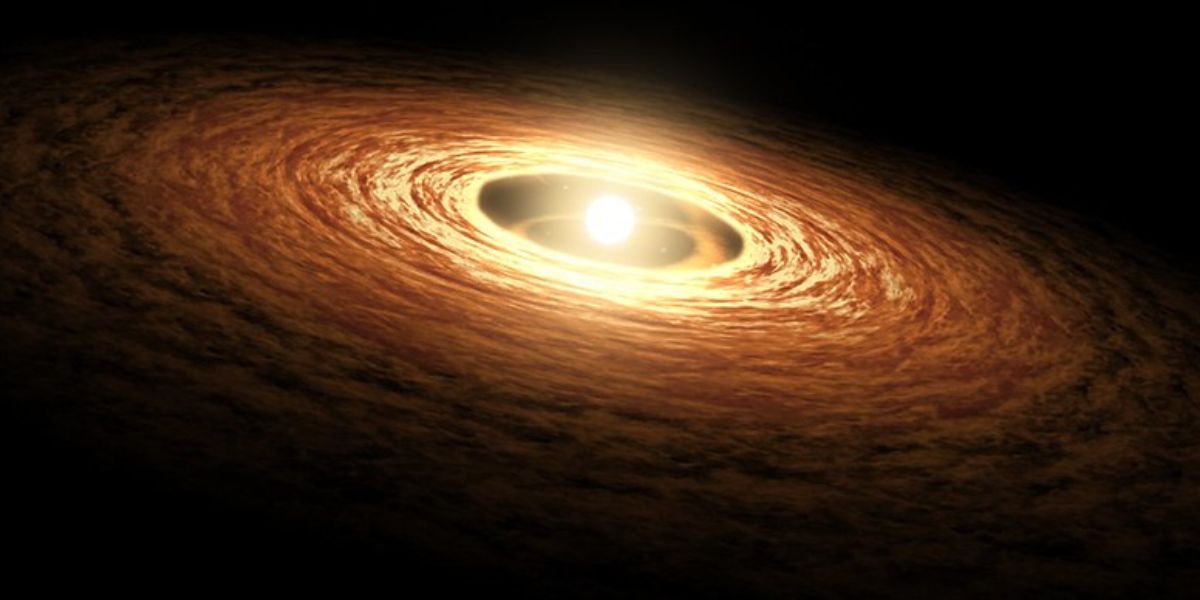
The Webb Telescope recently studied a planet-forming disk of gas and dust around a star, weighing 1/10th the mass of the Sun. The telescope found out that there are a lot of carbon-containing molecules including ethane, propyne, ethylene, and more. Therefore, small stars are likely to form rocky planets as compared to gas giants, making these disks interesting.
Starburst Galaxy NGC 4449
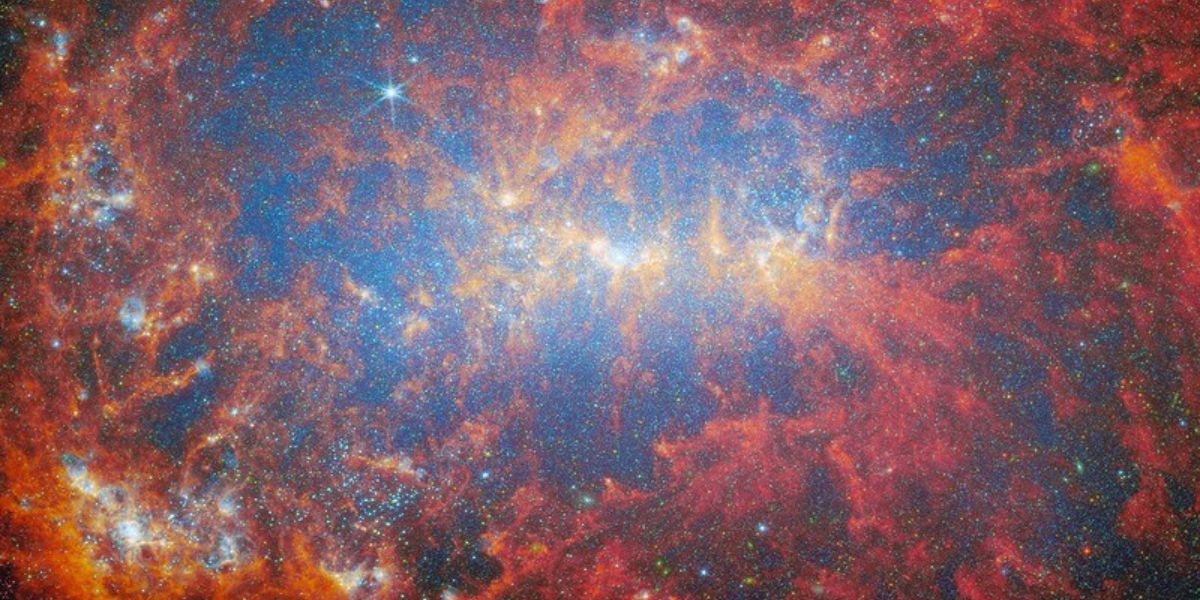
This image of the starburst galaxy NGC 4449 has been captured by the James Webb Space Telescope. It is located 12.5 million light-years away. Usually, starbursts are intense periods when lots of stars form quickly in the center of a galaxy. But in the case of NGC 4449, star formation is spread across the whole galaxy.
Three Galaxies Forming In Early Universe
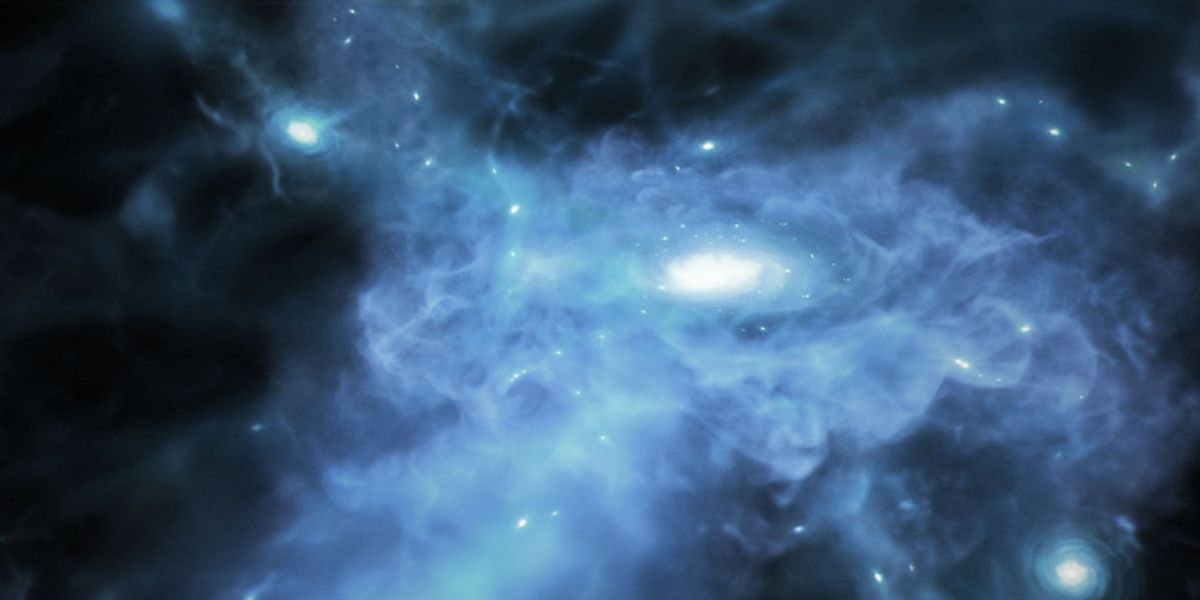
The James Webb Space Telescope has captured the image of 3 galaxies actively forming when the 13.8 billion years old universe was in its infancy. These galaxies are surrounded by gas made up of helium and hydrogen.
Star-Studded Cluster NGC 6440
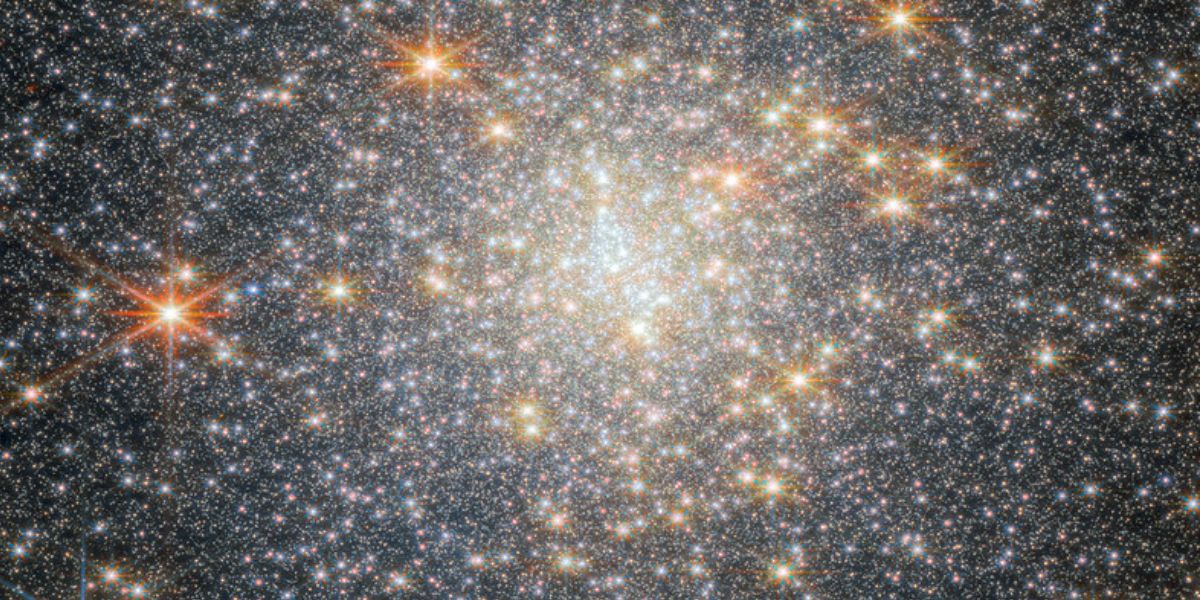
The powerful telescope has captured the image of a star-studded cluster, NGC 6440. This globular cluster orbits within the Galactic bulge which is 28000 light-years away. These clusters are full of old stars tightly bound together by gravitational force.
Iconic Horsehead Nebula
![]()
The James Webb Space Telescope has captured the iconic horsehead nebula which is famous for looking exactly like a horse’s head. The ultraviolet radiation from the young stars affects the chemistry in this nebula which is why it is considered one of the best for studying how star radiation interacts with space matter. Also, this portion of the Horsehead Nebula is about 0.8 light-years across.
Duo Of Starburts In I Zwicky 18
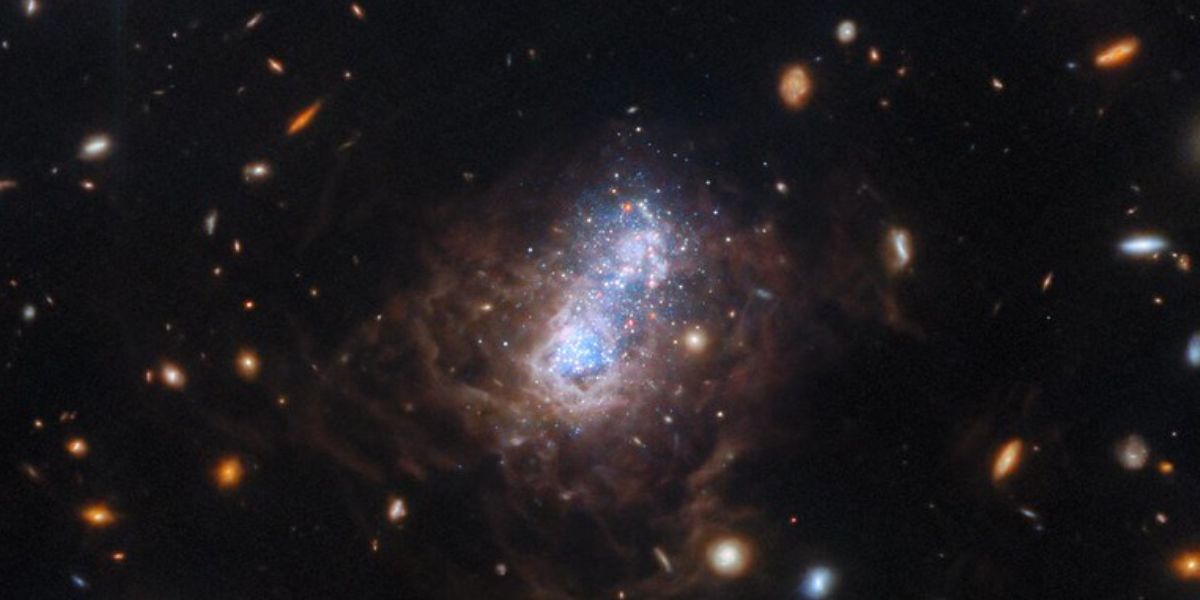
The I Zwicky 18 has been captured in a stunning picture by the James Webb Space Telescope. It is an irregular dwarf galaxy that is located 59 million light-years away and is smaller than Earth’s galaxy. At the center of the image, there are two bursts of new star formation surrounded by thin bubbles of gas.
Star-Forming Region, NGC 604
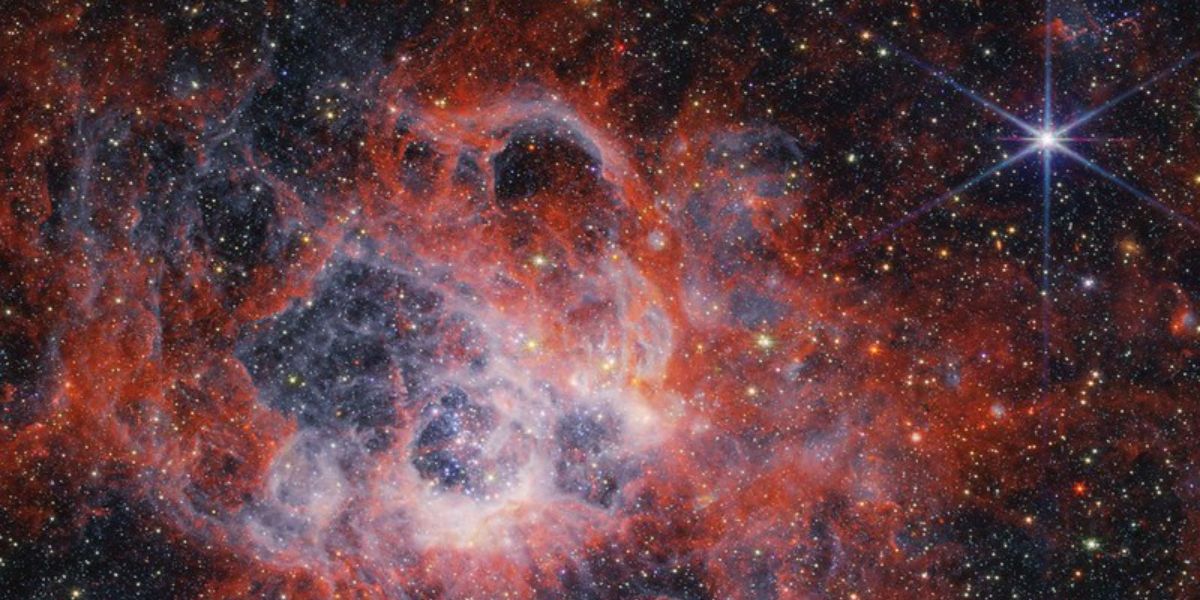
NGC 604, a star-forming region was captured by the James Webb Space Telescope in a stunning picture. This region contains more than 200 hottest and most massive kinds of stars including B-type and O-type. Some astronomers say that there is no other region like this within our Milky Way.
NGC 1559
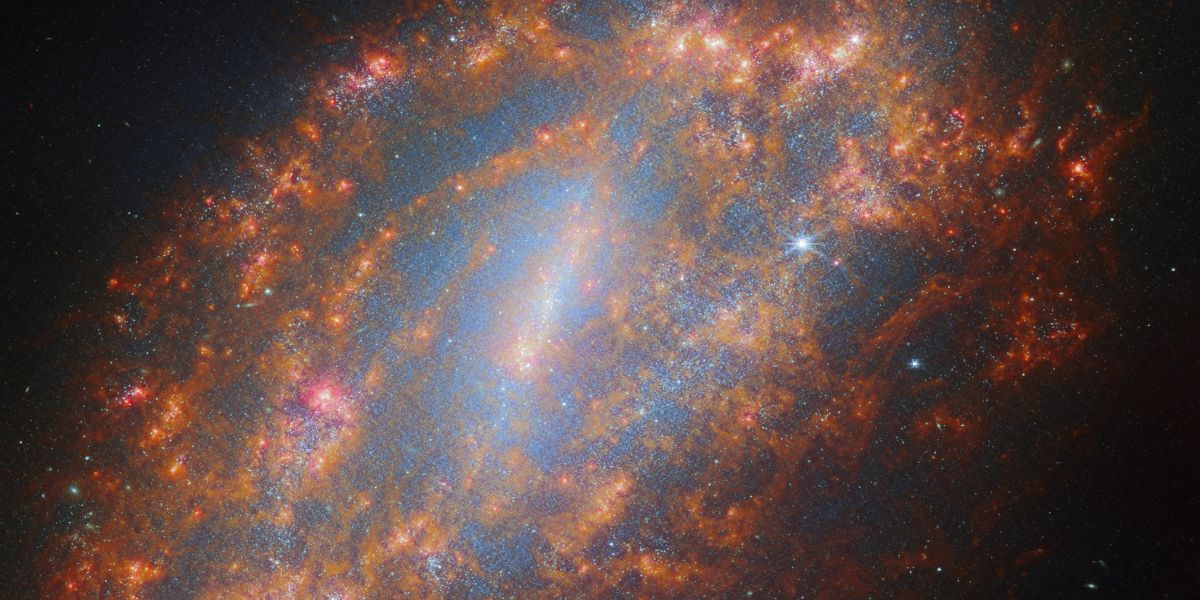
The NGC 1559 is a barred spiral galaxy which is located approximately 35 million light years away. The galaxy has massive and curved arms that help with star formation. In this image, the mid-infrared instrument of the telescope captures the glow of interstellar dust grains while the near-infrared shows the light from the stars.
NGC 1300
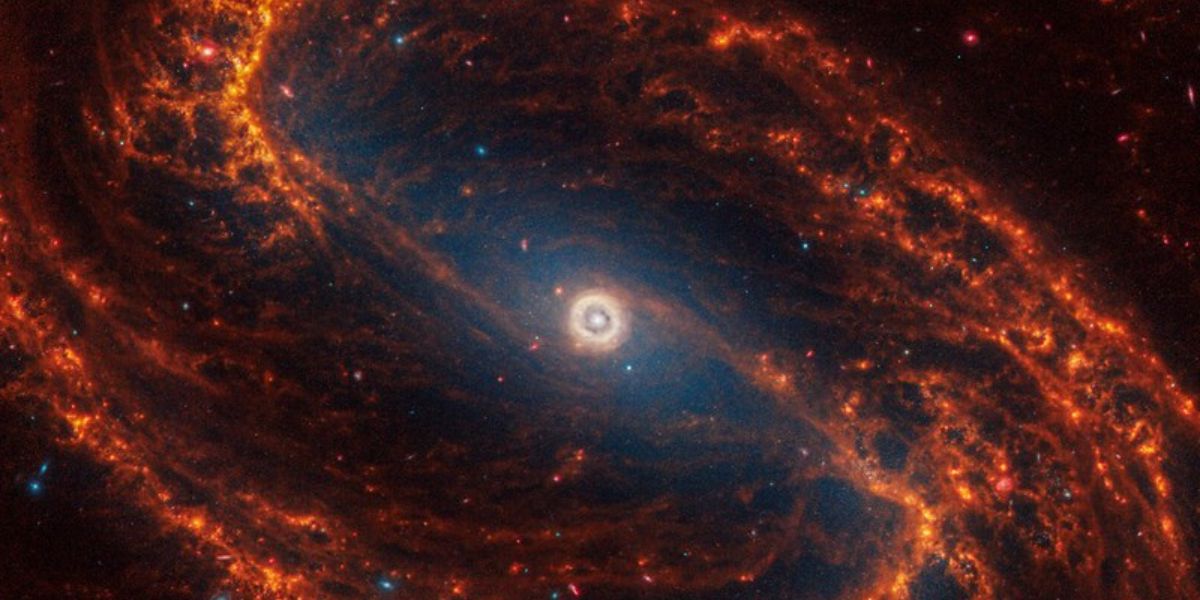
The above-mentioned image captured by the James Webb Space Telescope is of the spiral galaxy, NGC 1300. It is located 69 million light-years away in the Eridanus constellation.
NGC 1087
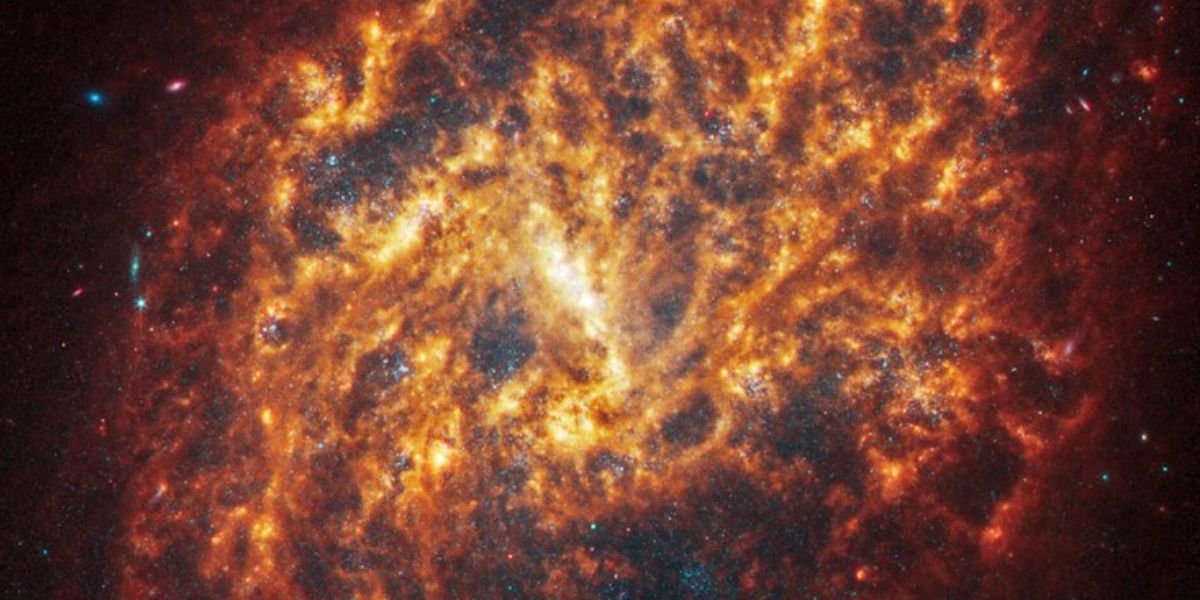
This image is of the spiral galaxy named NGC 1087. It is located 80 million light-years away in the Cetus constellation.
Stunning Image Of NGC 1566
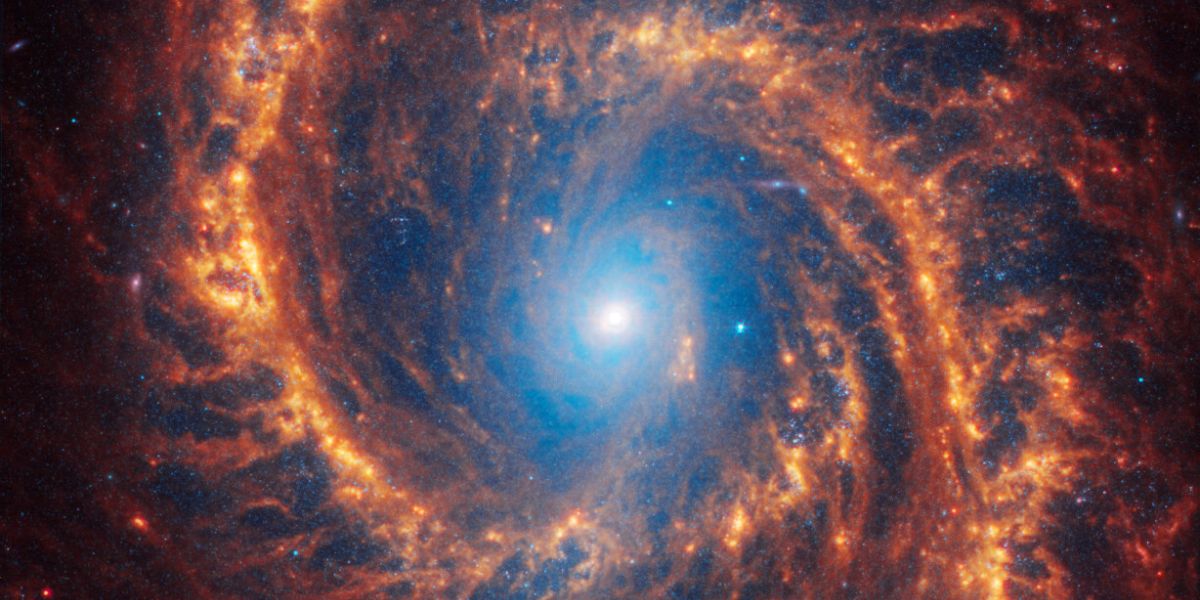
The spiral galaxy NGC 1566 has been captured in a stunning photograph by the James Webb Space Telescope. It is located 60 million light-years away in the Dorado constellation. In the image, the dust and gas are shown in stark shades of red and orange. Also, the spiral arms appear in more detail with more sharp and jagged-looking edges.

